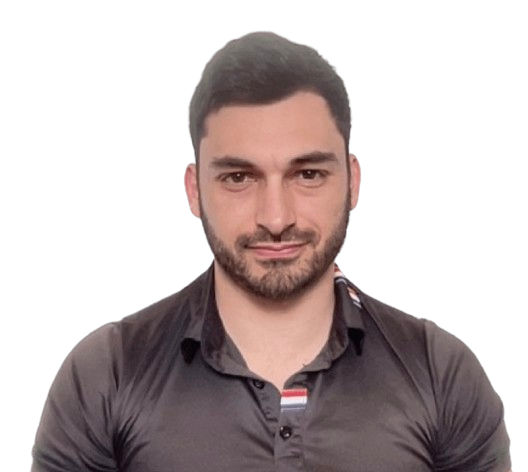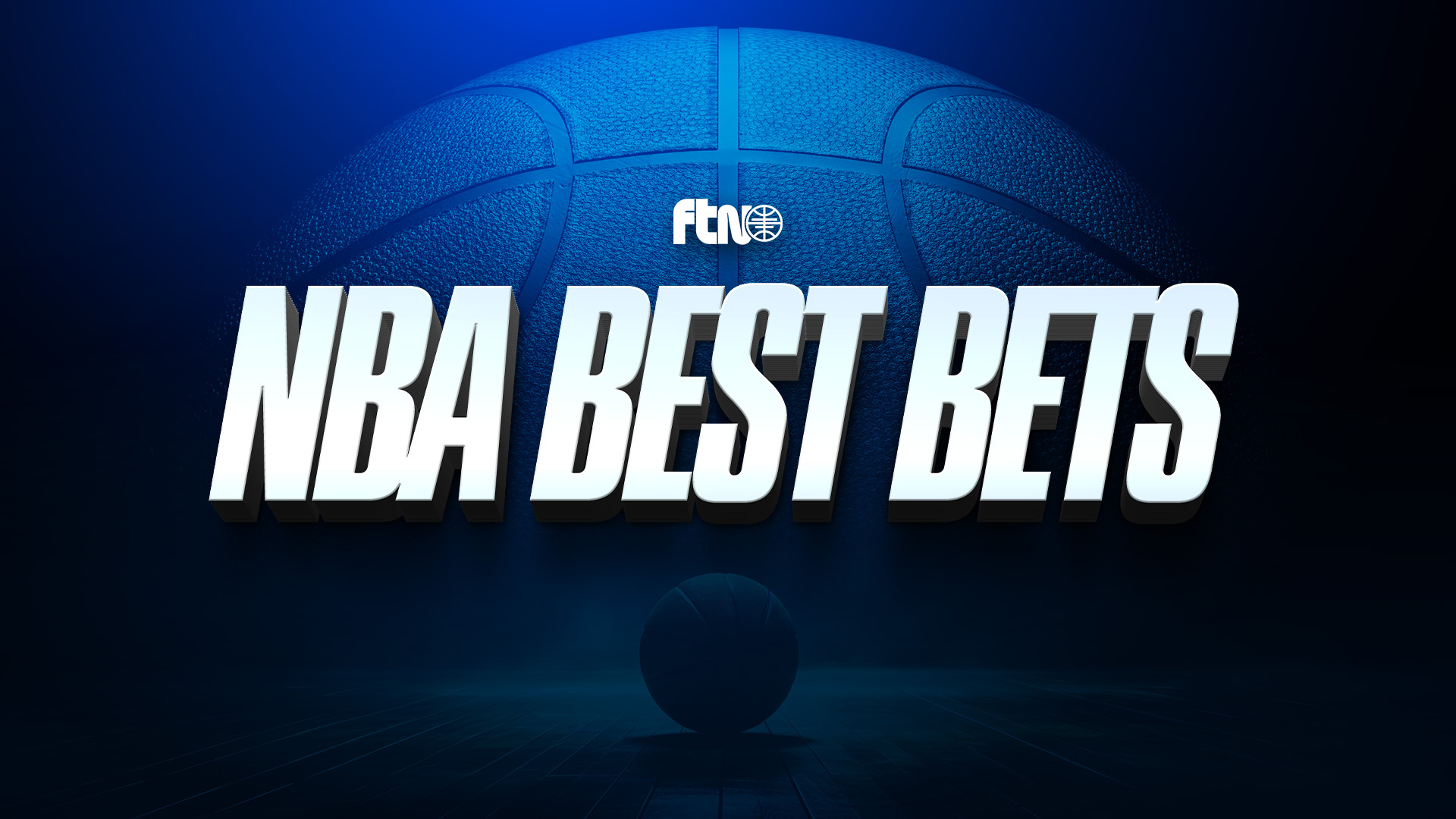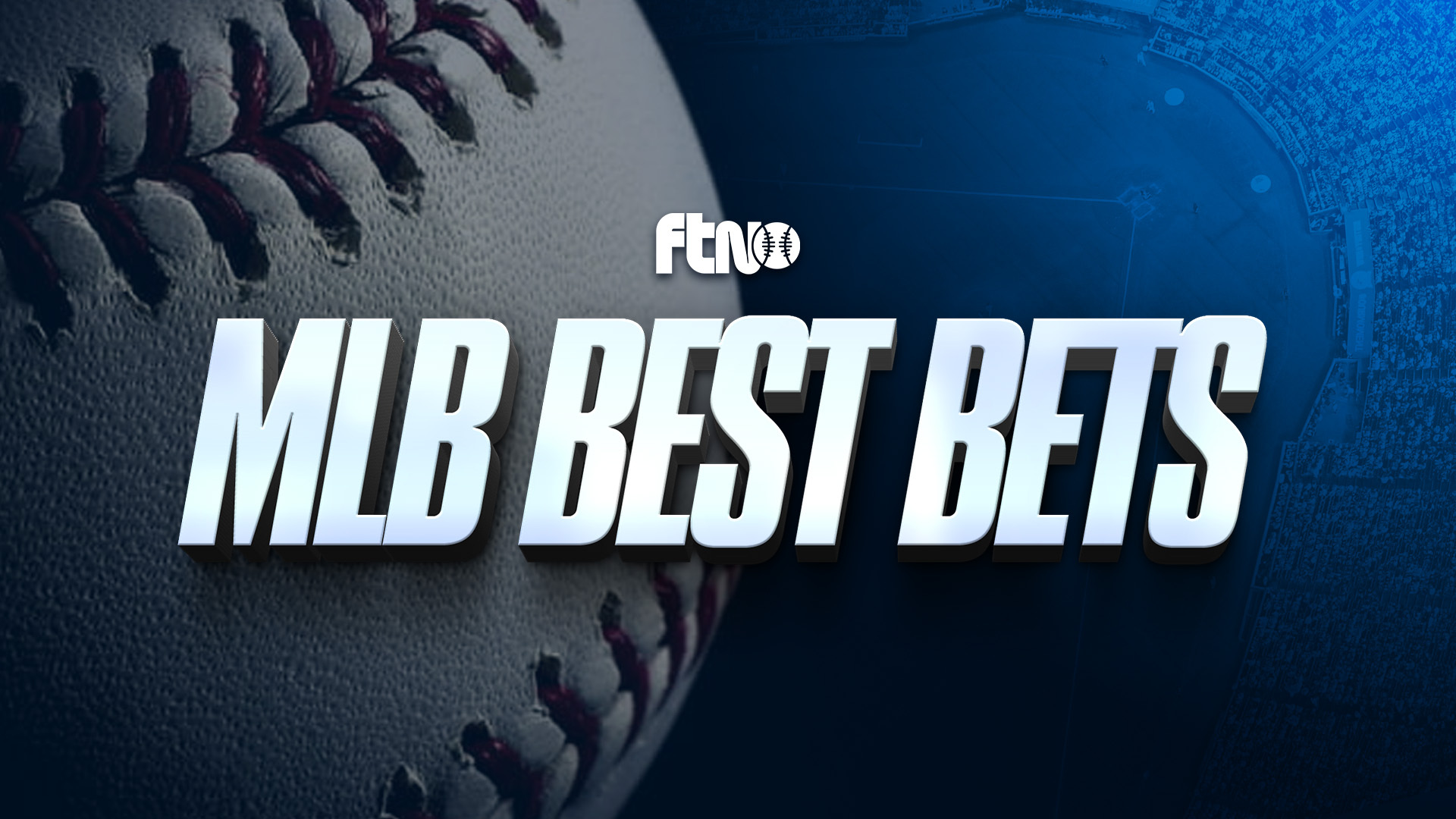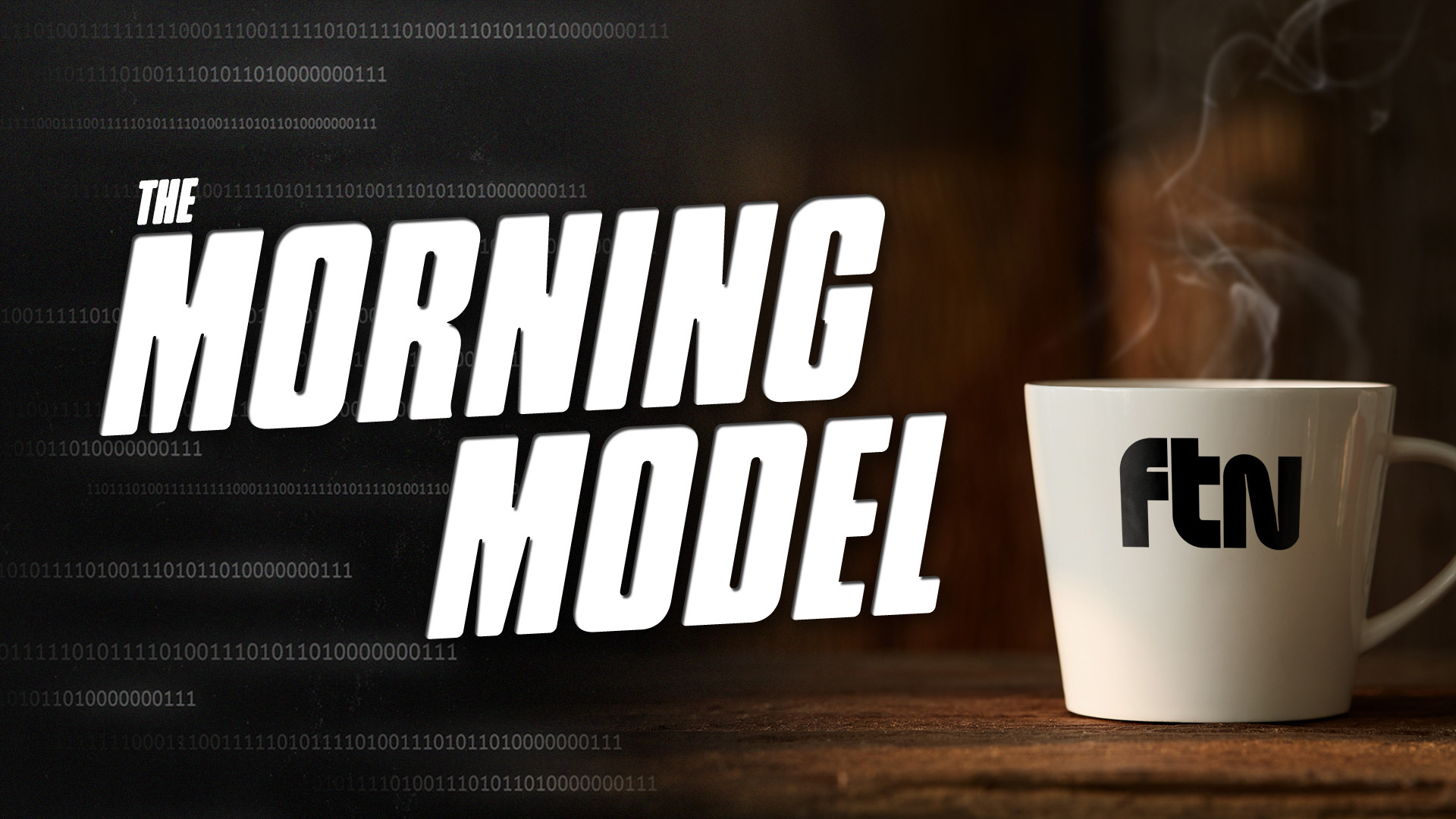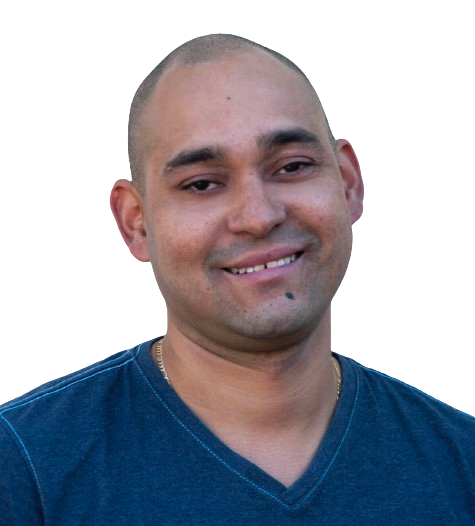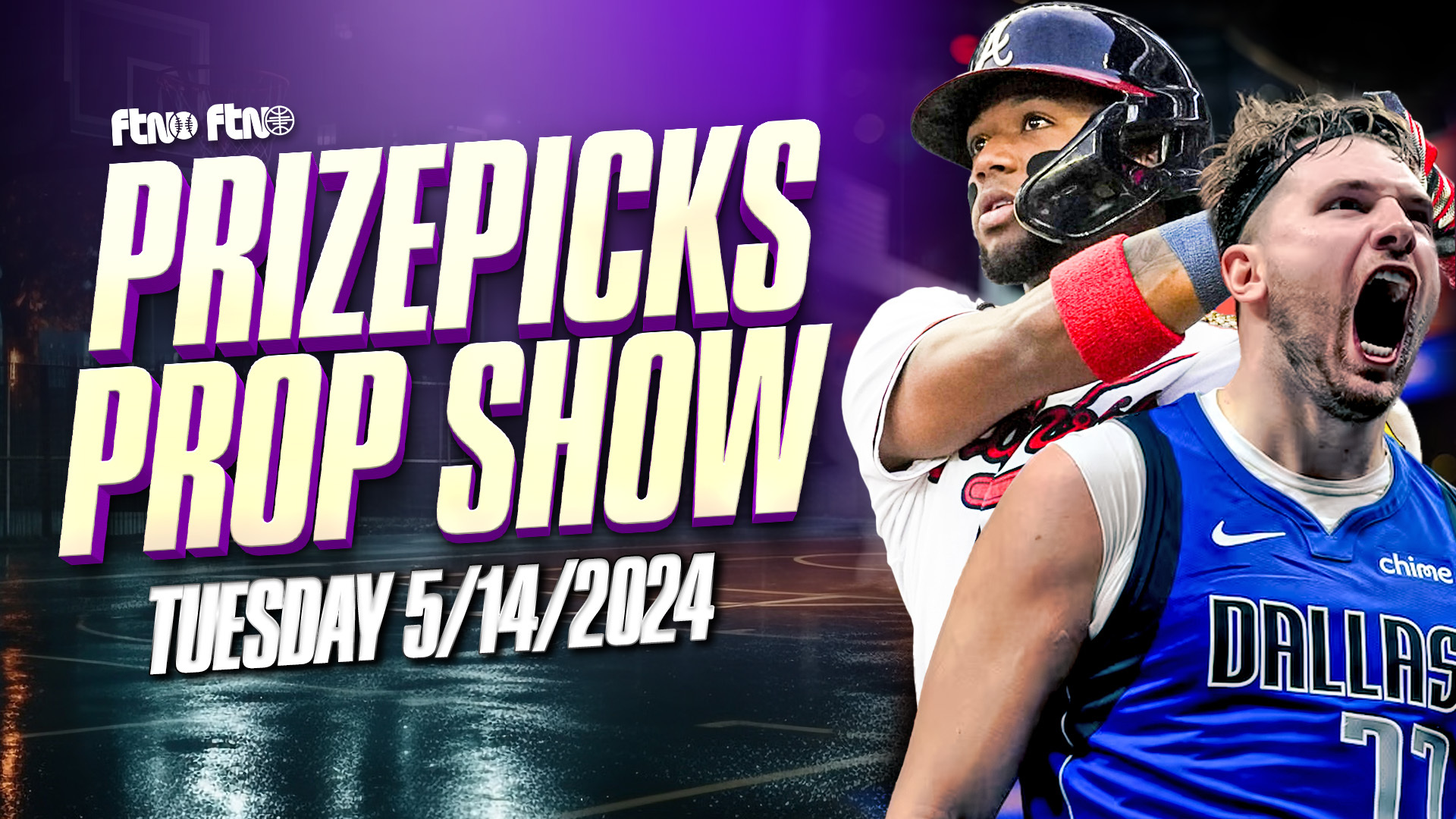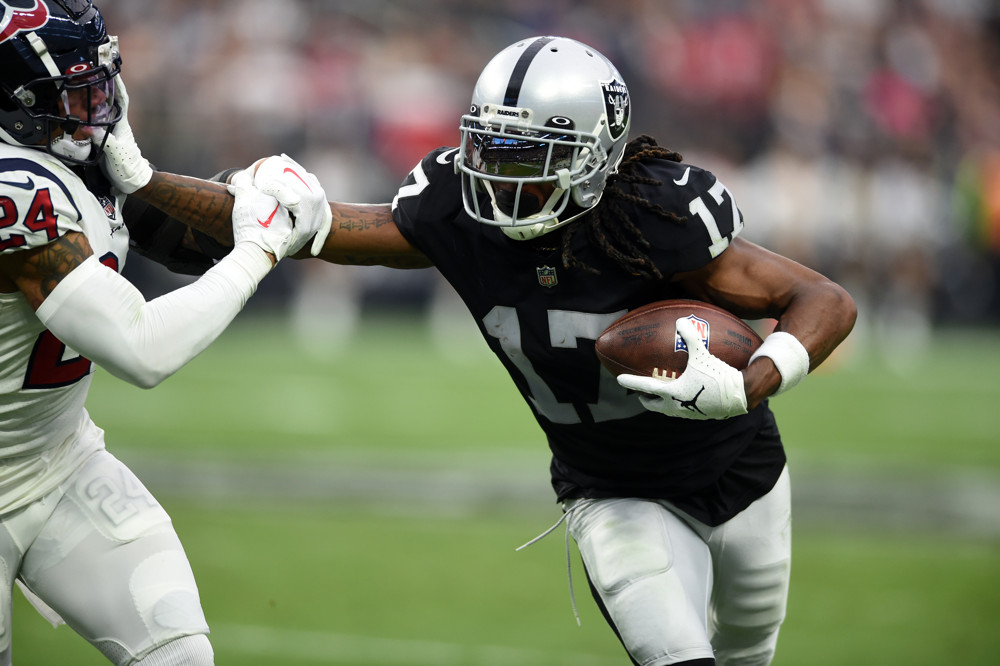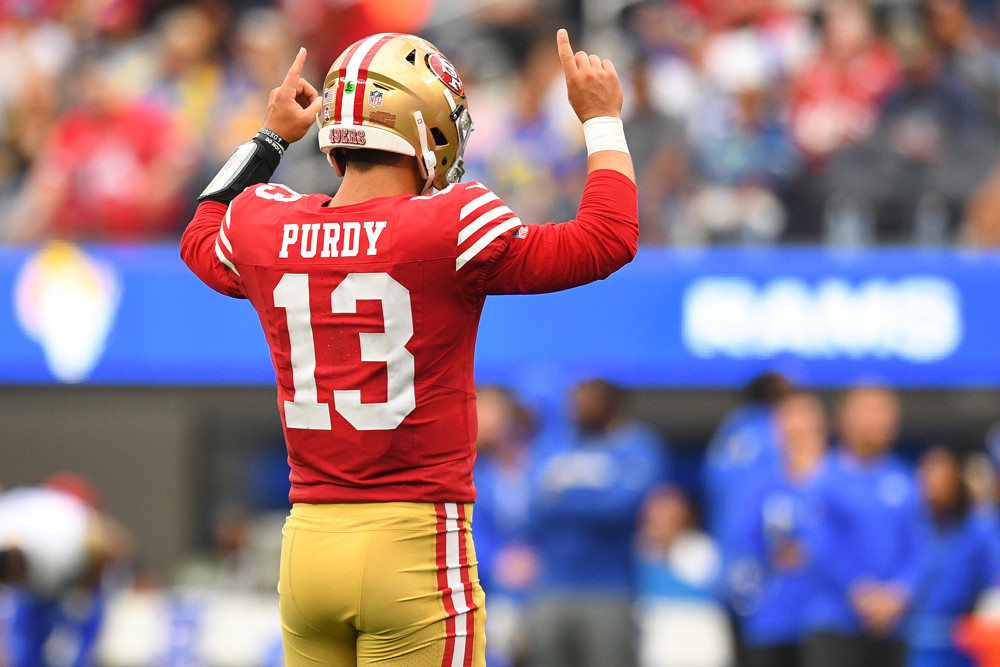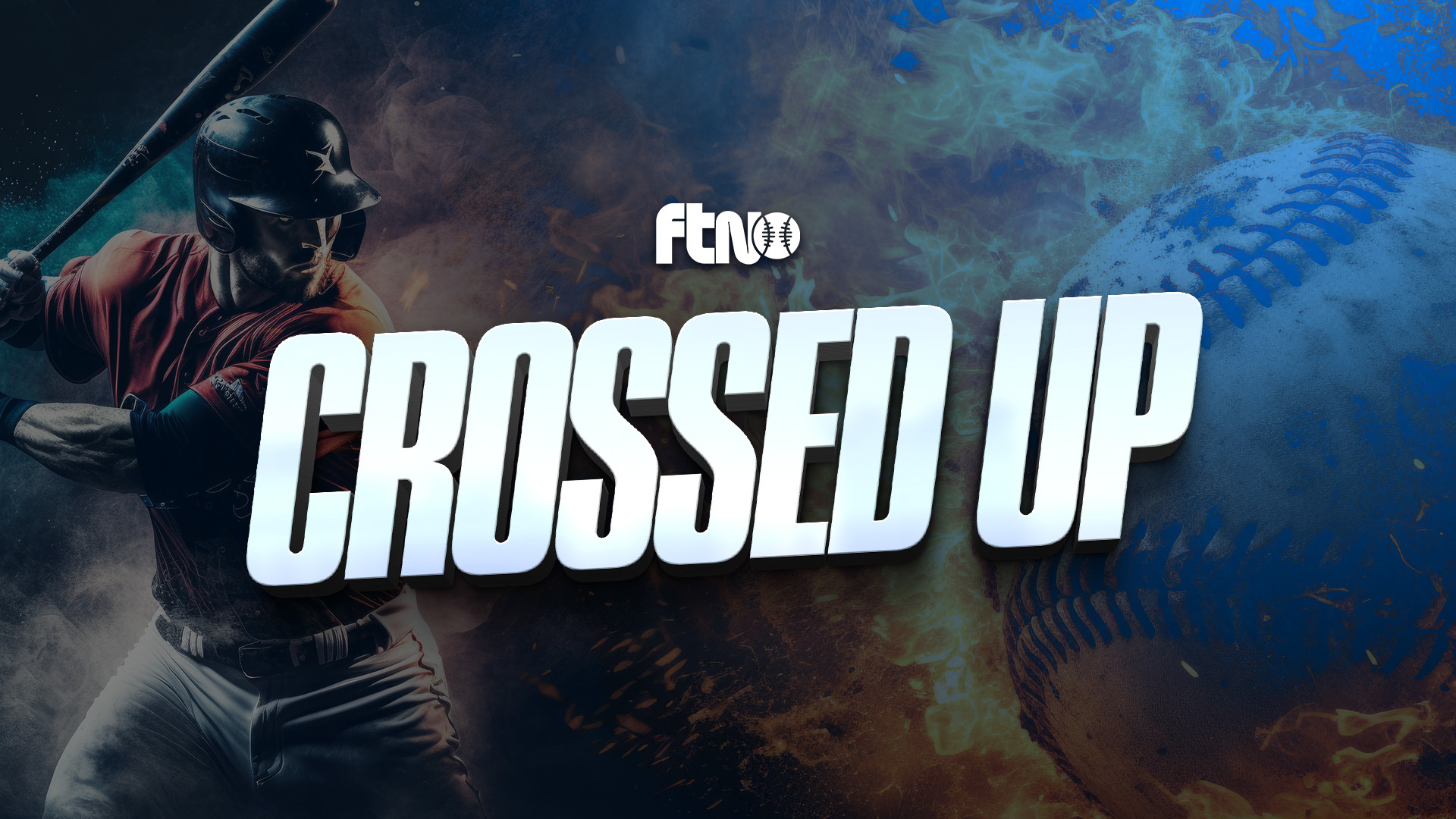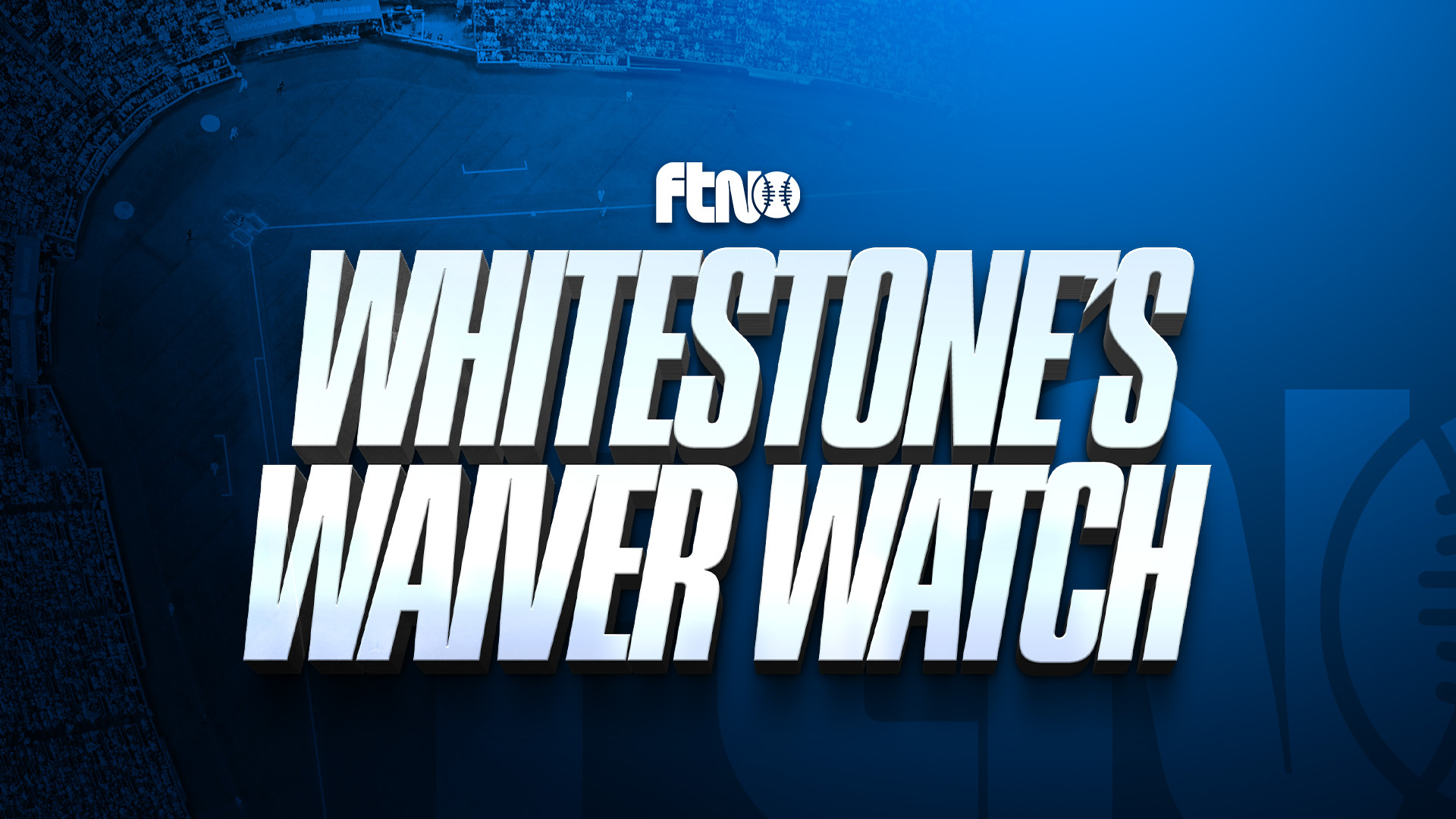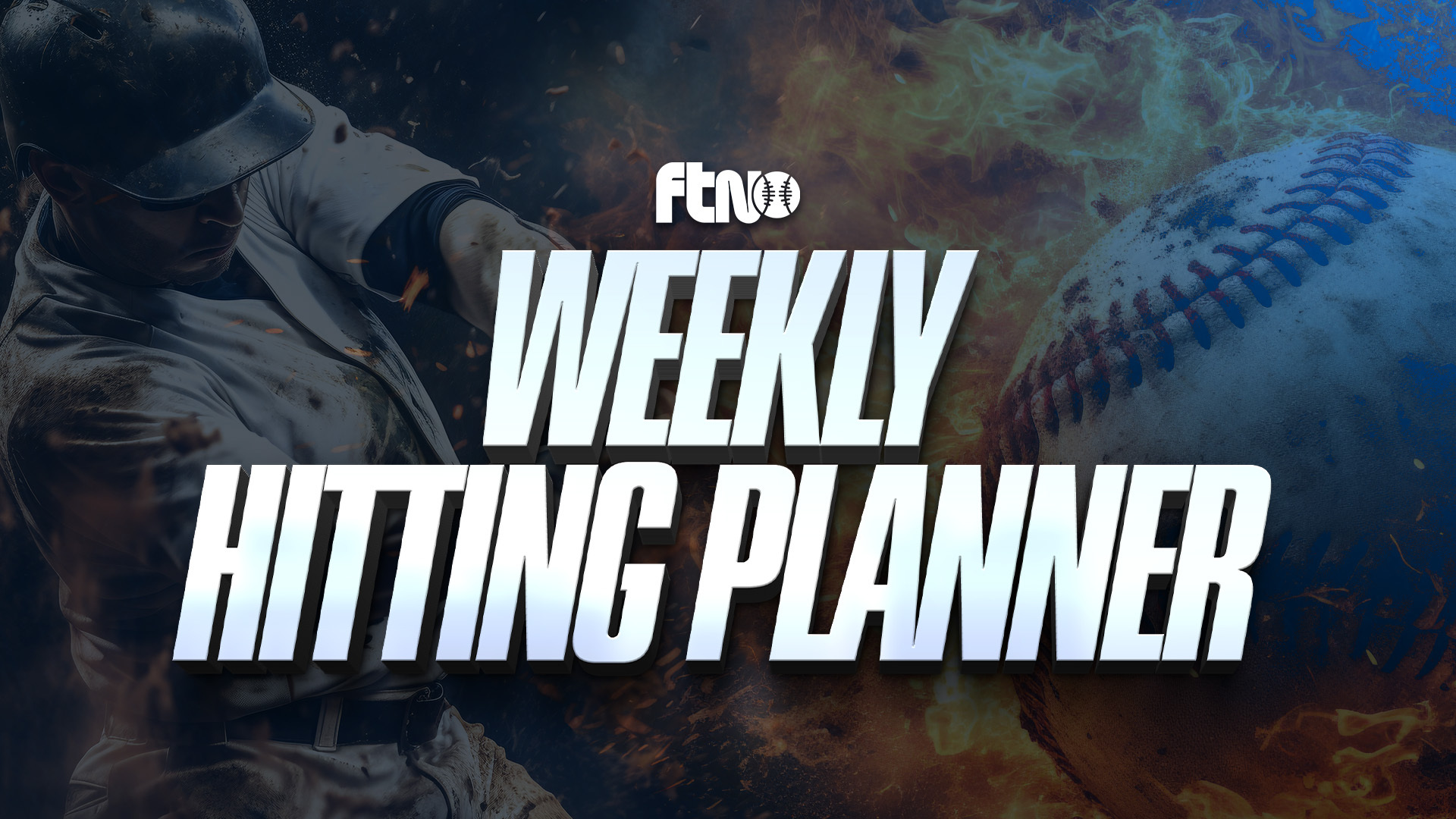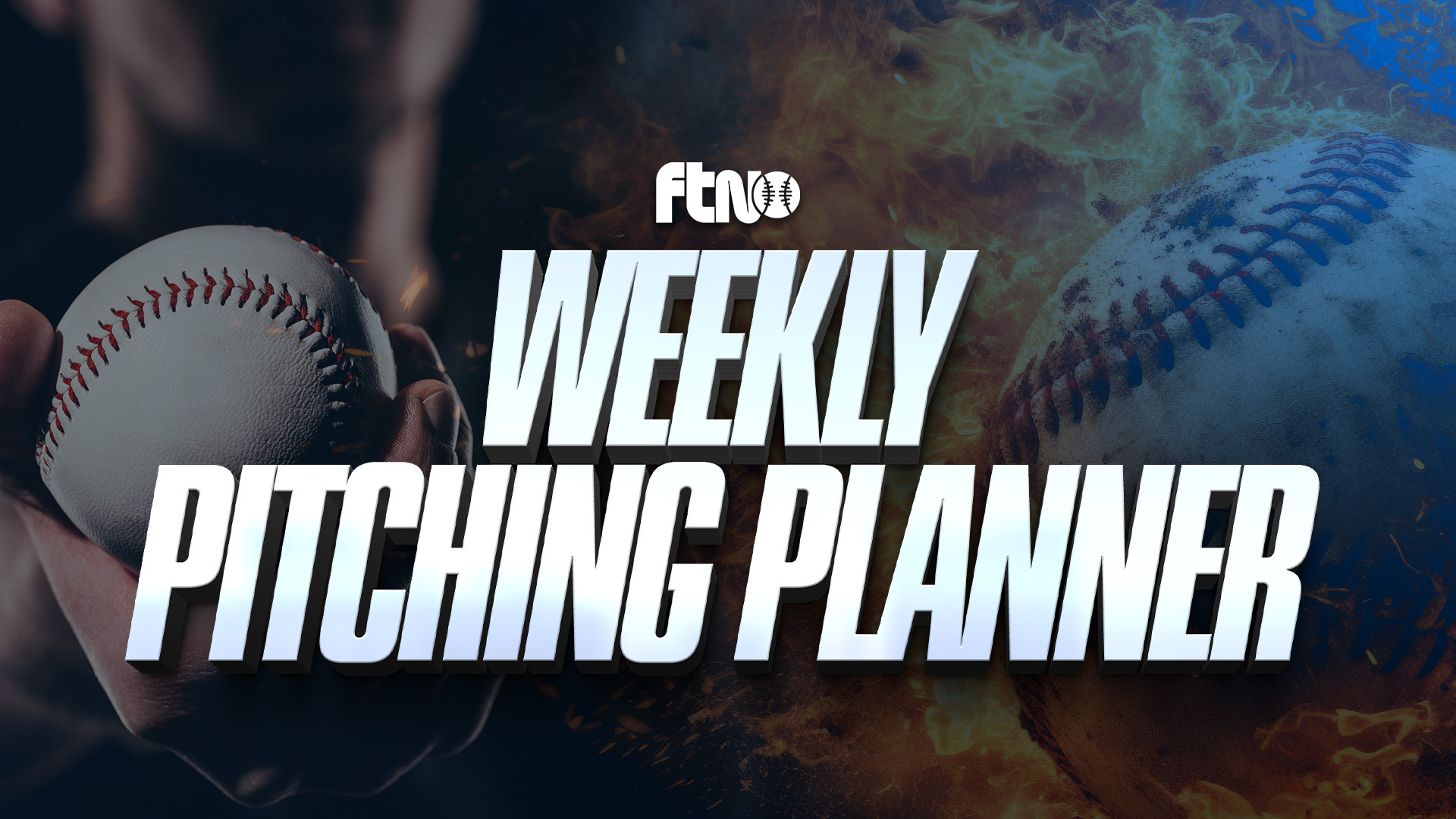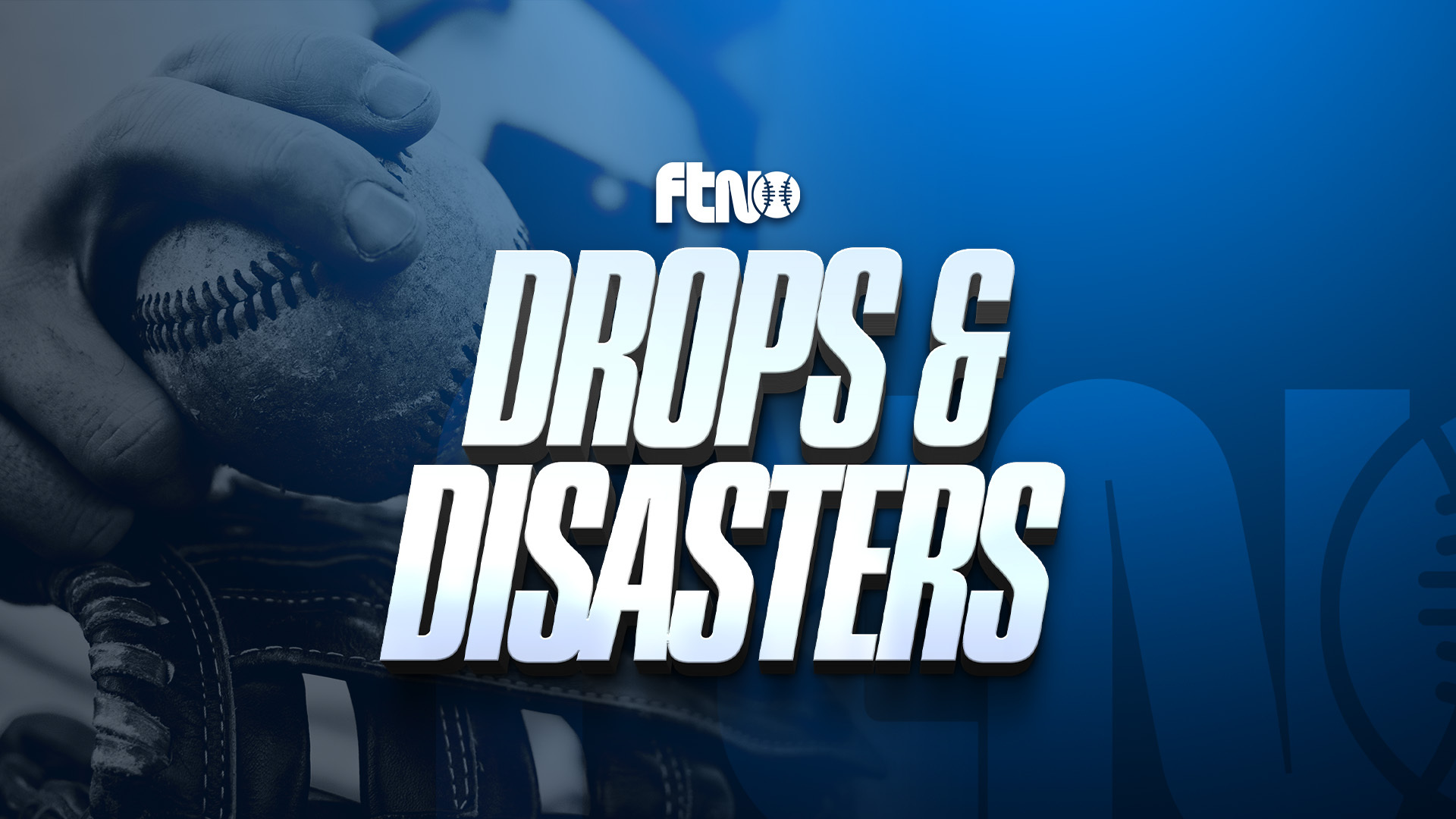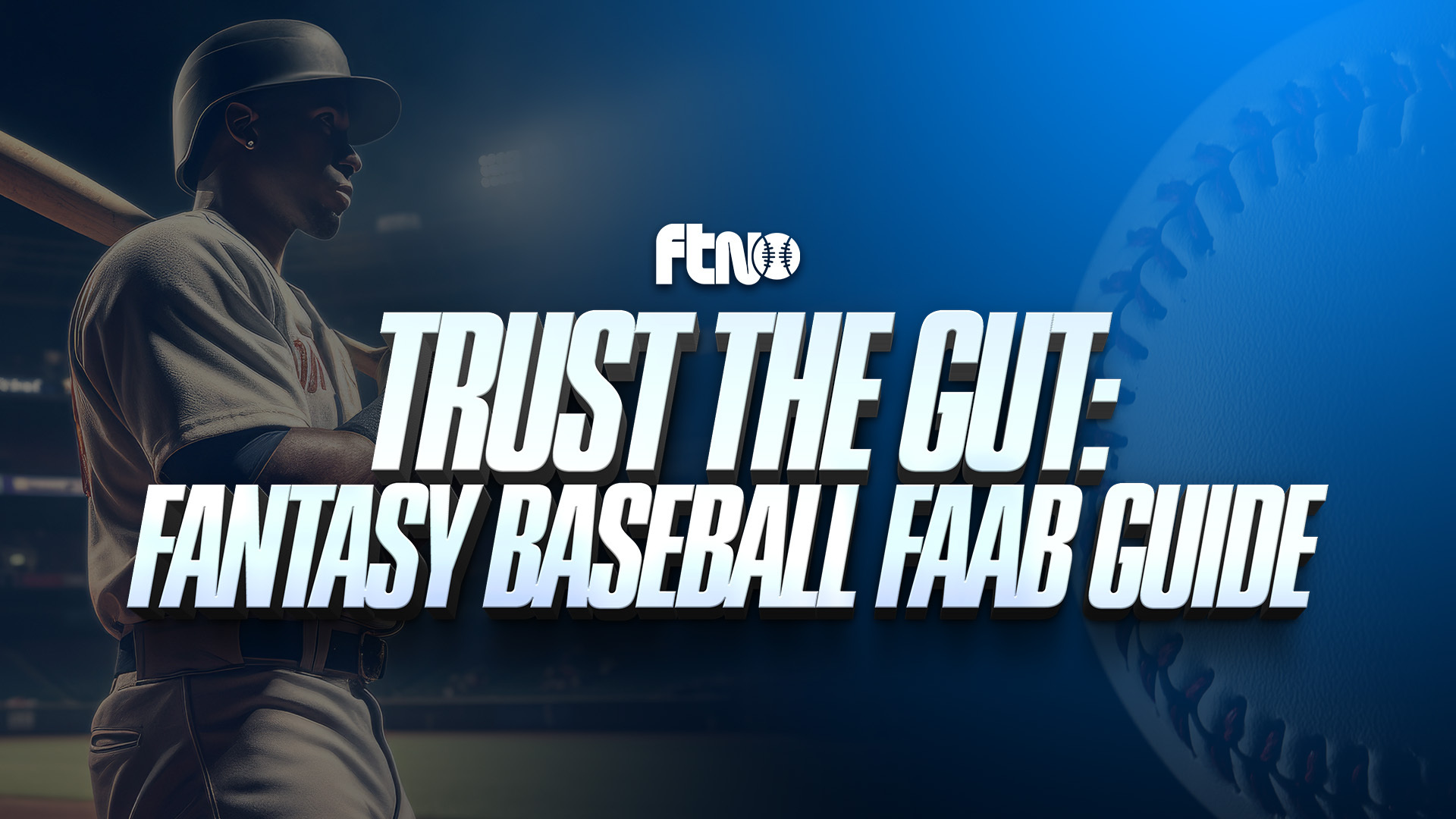
With football season now a distant memory and weather starting to warm, much of the fantasy community’s attention has turned to MLB. While there is already an unfathomable amount of content available for your consumption here at FTN Fantasy on the known quantities of big-league talent, we’re going to aim to do something different here.
Our target audience today is dynasty players, as the most actionable info from these prospect rankings will be in dynasty leagues, but you can also benefit in traditional leagues by knowing what prospects lay beneath the surface and what their relative skill sets are should they accelerate their timelines and become fantasy relevant before anyone expects. You also might find yourself inspired by this amount of prospect info being available and want to join a dynasty league for the first time, and if that’s the case, I salute you.
Some caveats about this list as it will compare to other prospect rankings lists you might see.
- We only care about fantasy impact, so a hitting prospect’s defensive skill only matters inasmuch as it is a determinant in his likelihood of regularly cracking a big-league lineup; it is not in and of itself a consideration. Most prospect lists value defensive ability as part of their overall evaluation, but it will be given very little impact here. This will change some rankings considerably, so be cognizant of this difference in methodology.
- Positional scarcity and timeline until big leagues matter. A catcher who can provide similar offensive numbers as a 1B will be far more valuable. A prospect closer to the majors is generally more valuable than one further away. We all want deep sleeper 17-year-olds who are tearing up A-ball, but the reality is the longer the duration between present day and MLB debut, the more things that can go wrong due to injury and/or circumstance, so there is more inherent risk. This is especially true with pitching prospects.
- We will include a smattering of amateur players — sometimes the best dynasty assets are ones that are not generally on your competition’s radar, whether this be an international free agent or a domestic high school/college prospect. Many prospect lists consider only players who are on a minor league roster, we aim to be even more forward thinking than that.
- I’m a bit more arbitrary and subjective with the definition of prospect than some prospect lists. My definition is more or less: Have we seen this player play in the big leagues in the role that he is likely to play in the big leagues? If so, they are not going on the list. So, Keibert Ruiz, Aaron Ashby and Sixto Sánchez and the like have graduated, and their absence is not a knock on their talent but rather a classification. Conversely, Shane Baz was not used in the role of front-line, high-volume SP where I expect him to flourish, and Cristian Pache and Joey Bart, despite having extended playing time, were brought up far before they were ready due to circumstance, and thus have not “graduated” in the way we expect prospects in their final form to do. Veteran international free agents like Seiya Suzuki, who is 27, while technically rookies, also do not qualify as prospects for our purposes. So, if your favorite prospect is not on here and you think he should be, or you want to gripe that a guy has had major league time and shouldn’t be on here, all that tells me is that you skipped over this paragraph.
- A quick note on “Future Value,” which you will see referenced here and on the accompanying charts — this is on the commonly used 20-80 scouting scale. This can be used to describe a prospect’s overall grade (80 is likely a Hall of Fame candidate, 20 is fringe organizational depth) or an individual attribute (Joey Gallo has 80 power, Bartolo Colón had 20 speed). No one described here will have an overall grade lower than 40, as this is of course a top prospects list, but they may have individual grades of as low of 20 for certain attributes. One of the best things about analyzing prospects for fantasy baseball purposes is that you can find prospects who have elite traits that translate well to fantasy but rank much lower on their overall grade due to poor athleticism or defensive skill. As long as they stay in the lineup, you will still reap the rewards of their elite individual traits, their blemishes be damned. Man, I got excited just typing that!
On to the prospects…
Blue Chippers
This section will likely primarily include names you know already and have seen elsewhere. You are likely already familiar with the projections, so we’ll touch on them briefly, but don’t expect to find anything earth-shattering here. Instead, pay close attention to the order in which they are ranked, which may vary wildly in certain cases due to the skills that make up the prospect’s evaluation. These guys should be in the big leagues at some point in 2022, some may even make the opening day roster. We aren’t going to include anyone in this top 10 who is unlikely to have a big-league role in 2022, so you can feel very safe that you will get some near-term production out of anyone in this group.
1. Adley Rutschman, C, Baltimore Orioles
(Future Value: 70)
By all accounts, Adley Rutschman is the total package. Above-average hit tool with plus pitch selection and plus power would make him an elite prospect at any position, but as a switch-hitting catcher, it makes him a unicorn. Many will say that he could be the next Buster Posey, but I don’t think that goes far enough. I would say a more apt comparison would be the next Chipper Jones if Chipper Jones had catcher eligibility. We are probably not too many seasons from Rutschman being a top-25 fantasy asset — if not a first rounder, due to the rarity of his skill set at his position and the gap between what he can produce there as opposed to any other player.
2. Bobby Witt Jr., SS, Kansas City Royals
(Future Value: 60)
A tick down from Rutschman due to no fault of his own and just the position that he plays, Bobby Witt Jr. is just as close to a sure thing with just as much upside, on a team that is just as bad, paving the way for plenty of playing time. He might have even more power than Rutschman once his skill set is fully unlocked. It’s an obvious comp, and while the Bo Bichettes of the world don’t just come around all the time, this is a good ceiling for Witt to be targeting, although we’ll need to temper our expectations somewhat especially in counting categories due to the limitations of his surrounding cast in KC. Talent wise, though, Witt is just as good and perhaps could be even better than what we’ve seen from Bichette.
3. Spencer Torkelson, 1B, Detroit Tigers 1B
(Future Value: 60)
If you were to create a corner-infield archetype in a video game, the result would be pretty close to what Spencer Torkelson brings to the table. Extremely good pitch selection will allow him to work favorable counts and maximize his opportunities to do damage, while a plus hit tool and elite power will ensure the damage he does changes the landscape of ballgames more often than not. While the Tigers flirted with the idea of him at 3B, where he would be an even more useful fantasy asset, his likely home is at 1B where 30-homer seasons should be the norm. If he can improve his OBP with seasoning while maintaining enough aggressiveness to keep pace with the run production expected from a 1B, he could have a Freddie Freeman-like ceiling, especially if the supporting cast steadily improves.
4. Julio Rodríguez, OF, Seattle Mariners
(Future Value: 60)
While Julio Rodríguez had perhaps profiled as a classic RF (power and a big arm with not much else), the adjustments he made prior to the 2021 season allowed him to showcase that he might have some ability as a pure hitter as well as just a traditional slugger, displaying excellent bat to ball skills putting up a .461 OBP across over 200 PAs in AA. With 35- to 40-homer potential and the ability to approach .300 at the big-league level, this is a bat that will get in the lineup sooner than later, and stay there. Add in a plus speed tool (16 SB during his 46 games stint in AA) and the case could be made that he has a shot at being the best producer of this entire prospect crop, even if playing at a position with ubiquitous other options somewhat diminishing his overall fantasy value.
5. Riley Greene, OF, Detroit Tigers
(Future Value: 60)
There’s elite upside here, and while Riley Greene is not necessarily the best at any one thing, the balance of his game as well as his impact defense being likely to be in the lineup and occupying a premium lineup spot make him what will likely be a reliable fantasy asset for years to come. He strikes out a bit more than you would like to see (a pretty consistent 27% clip across all levels) but is also fairly polished and ready for the big leagues sooner than later. A good roto combination of .300 hitter, with (at least) 20-homer power and 15-steal upside that should pile up the counting stats in the heart of an improving lineup, he should certainly be on your radar.
6. Shane Baz, SP, Tampa Bay Rays
(Future Value: 50)
It’s unlikely there is a more dynamic arm in all of the minor leagues than Shane Baz, who would right away be the most dynamic arm on a number of major league teams. With absolute domination in AAA in 2021 already under his belt, and an impressive cup of coffee in the big leagues, it’s hard to come up with a pitching prospect that has a quicker path to being a fantasy asset. Baz’ style and skill set is also extremely fantasy friendly. With a ridiculous high 30% K rate throughout minor league ball and mid-single-digit BB rate, the stuff should absolutely translate. The only thing that will cap his production is what we’ve come to know all too well with Rays pitchers- they might not have the same leash as other teams. Still, if he can become a healthier facsimile of Tyler Glasnow (another piece of the Chris Archer trade) with elite K%s and exceptional ratios, we will be very happy with the result even if he leaves some counting stats on the table.
7. Oneil Cruz, SS/3B, Pittsburgh Pirates
(Future Value: 60)
First, let us marvel at the uniqueness of a prospect like Oneil Cruz. Hitters (people?) at 6-foot-7, 210 pounds don’t come along very often, and it is rarer still that they play as demanding a position as SS. Add 80-grade power to the mix, and this makes Cruz pretty one-of-a-kind. While he will likely end up at a less premium position, and probably strike out more frequently than we want (K% creeped up at upper levels), this is a rare talent in an even rarer package that could be middle of the order force for plenty of time to come. There’s plenty of risk here, humans of this size sometimes have trouble staying healthy, but there’s plenty of opportunity for reward as well.
8. Max Meyer, SP, Miami Marlins
(Future Value: 55)
There’s some risk to Max Meyer’s projection, as some evaluators believe he would be better suited in a high-leverage relief role, but he combines electric velocity with a wipeout slider and had ample success across 100 innings of AA, flashing elite strikeout upside and displaying a fantasy friendly ground ball lean. While the Marlins have plenty of young talent in their rotation, if Meyer pushes the issue, he will likely carve out a role, as he has more upside than the back end of the existing starters. One likely scenario is that he would push the erratic Jesús Luzardo to a relief role if Meyer is able to more consistently deliver positive returns.
9. Vidal Bruján, 2B/OF, Tampa Bay Rays
(Future Value: 60)
An extremely “Rays prototype” player, Vidal Bruján is athletic and versatile enough to man multiple positions. Second base and outfield are the likeliest deployments, but realistically he could play anywhere. With super utility Swiss Army knife Joey Wendle now further south in Florida, Bruján’s timeline is accelerated, and he should receive meaningful big league work in 2022. His 70 speed translated into 44 SBs over 441 PAs in AAA in 2021, so even if he only sees 400 PAs for the Rays in 2022, he’ll be a useful source of SBs without being a drag AVG or OBP the way some elite base stealers can be. There likely isn’t a ton of power here, but Bruján did go from never putting up more than 5 HRs at any level to putting up 12 in AAA in 2021, so there might be an added element to his game as he matures physically that we aren’t even accounting for in our current evaluation.
10. CJ Abrams, 2B, San Diego Padres
(Future Value: 60)
This is perhaps a lower ranking than you’ll see across the industry for CJ Abrams, and that’s a reflection of how his skill set translates — he’ll be a high contact guy whose speed should help him maintain higher BABIPs than we might otherwise expect, but no real power to speak of. Abrams does have one elite skill (speed), so it’s discouraging to see him suffer any knee/lower-body injury, and that’s exactly what happened in 2021. If he doesn’t have the 80-grade speed, or he is more tentative — or worse, suffers another injury — things could go off the rails pretty quickly. That said, this rating reflects the risk that he might not be the terror on the basepaths he once projected to be, but if you see a 30-plus-steal season out of him in the high minors in 2022, odds are he is good to go and the speed has remained intact.
The Future and Beyond
11. Anthony Volpe, SS, New York Yankees
(Future Value: 60)
Anthony Volpe absolutely burst on the scene in 2021, splitting time between Low- and High-A, boasting a salivating power and speed combo resulting in 27 HRs and 33 SB across 500-plus PAs. While only 20 years old and still needing to fill out a bit physically, Volpe is likely to be the next great Yankee shortstop and will have ample opportunity to produce in an extremely friendly offensive environment surrounded by a juggernaut of a lineup. He may require some patience, as a debut prior to 2024 would be a surprise, but good things are worth waiting for.
12. Francisco Álvarez, C, New York Mets
(Future Value: 60)
A 70 grade in terms of raw power is rare enough for any hitter, and rarer still for a 20-year-old catcher who has consistently been the youngest player against the competition he faces at every level. Francisco Álvarez spent the bulk of his time at High-A, where he amassed 22 HRs and showed he wasn’t a complete washing machine on the base paths, putting up a respectable 6 SBs. The batting average took a large dip down to .247, but some additional seasoning against increased levels of competition should give him room to grow on that front. If he can continue this offensive arsenal as he advances and maintain his plus defensive grade, he should be with the Mets by 2023, there would be too much for the to lose in holding him back any longer.
13. Noelvi Marte, SS, Seattle Mariners
(Future Value: 60)
An international signing in 2018, Noelvi Marte held his own at only 17 years old in rookie ball, and after the lost season of 2020 absolutely lit everything on fire in 2021. While he did strike out a bit more than you would want at 22.2% in 478 PAs in A ball, he also managed to do it while showing extremely respectable power with 17 HRs and elite speed with 23 SBs over that same span. The tools are there for Marte to be an absolute superstar, and his arrival to the Mariners will coincide with plenty of other developing young talents in Julio Rodríguez, Jarred Kelenic and the core of established bats already in the Mariners lineup.
14. Marco Luciano, SS. San Francisco Giants
(Future Value: 55)
As many prospects do, Marco Luciano experienced some growing pains as a 19-year-old playing against more advanced competition in High-A. his batting average plummeted, his strikeouts skyrocketed, and perhaps importantly he wasn’t there long enough to make the necessary adjustments to really prove what he could do. This will be a critical next step as he traverses the upper levels of the minor leagues, Luciano will need to show that he can unlock the 70-grade power he is capable of and couple it with plus contact skills that are available if not yet on display at his current level. The massive frame and eventual move away from SS knock his fantasy projection down a tad, as he’ll need to hit even more at a less premium defensive position. Still, this is a 20-year-old SS who will develop in a front office known for getting the absolute most out of its homegrown talent (Buster Posey, Brandon Belt, Brandon Crawford, etc.). He should be an All-Star for years to come, and sooner than later.
15. Grayson Rodriguez, SP, Baltimore Orioles
(Future Value: 65)
At 6-foot-5 and 220 pounds, Grayson Rodriguez is out of central casting for the next great pitcher in the mold of a Justin Verlander/Gerrit Cole/Max Scherzer power pitching archetype. Through 18 starts in AA he managed to put up a video game like 39% K rate, which, while likely unsustainable at higher levels and over a larger sample, is still indicative of the sheer amount of raw talent Rodriguez has. He’ll also benefit (once he eventually reaches the big leagues) from the massive overhaul Camden Yards has seen, transforming it from an on-brand AL East launching pad to a pretty neutral park overall. All of that coupled with the complete lack of talent in the Orioles existing rotation, and we should almost certainly see Rodriguez’ star begin to shine in 2023, while a cup of coffee this season wouldn’t surprise either.
16. Hunter Greene, SP, Cincinnati Reds
(Future Value: 50)
Hunter Greene is raw and unproven, but boy is the skill set tantalizing. Regularly sitting 98-101 with ease isn’t something we see frequently out of SPs who have a full repertoire of offerings, and Greene can get up to 104 when he needs it. This is essentially like getting 6 innings of Aroldis Chapman with even better stuff and makeup. Unsurprisingly, Greene tore through AA last year, striking out 60 in only 41 innings of work before getting his promotion to AAA. Things weren’t quite as smooth sailing there, as his K% dipped down to only 28% (only 28%!) and he was much more hittable, including 11 HRs in only 65 innings, but this seems like growing pains more than anything else. With the big leagues in range and not a ton ahead of him in the Reds rotation, we should see how he handles big league hitters at some point in 2022, and he may end up even being an impact fantasy asset down the stretch run this season.
17. Marcelo Mayer, SS, Boston Red Sox
(Future Value: 55)
Marcelo Mayer is a long way off from the big leagues, but he is one to stash as his hit tool is great, and he also projects to add significant power to his frame as he develops, giving him a similar skill set to current Red Sox Alex Verdugo and Xander Bogaerts, and he should maintain the all-important SS eligibility throughout his development due to plus defensive ability at the premium position. While he is a luxury asset and perhaps not the ideal player to focus on for teams competing now, the talent should not go overlooked.
18. Corbin Carroll, OF, Arizona Diamondbacks
(Future Value: 60)
An elite talent who gets a bit overlooked due to both stature (5-foot-10, 165 pounds) and injuries (only played seven games in 2021 due to shoulder surgery), there is plenty to love here. A rare combination of abilities to hit for contact and hit for power complement Corbin Carroll’s elite 70-grade speed, making him a desirable asset in any lineup. It would be nice to see his surrounding cast beefed up a little bit to help contribute to his eventual counting stats, but we are a few years away from seeing Carroll’s debut anyhow and plenty can change.
19. Reid Detmers, SP, Los Angeles Angels
(Future Value: 50)
Unlike many prospects who typically rank this high, Detmers is a southpaw who does not have a blazing heater that touches triple digits when he so desires — instead, he can be found sitting 90-92 and has a wicked curveball and wipeout slider that take opposing hitters focus off of his serviceable heater. In doing all of this changing of the swing plane, and possessing 60-grade command, Detmers has every opportunity to put together a John Means or Patrick Corbin type of career. He’s struggled with his taste of the big leagues so far, but Detmers was likely ahead of schedule with that deployment and should show improvement as he gains experience.
20. Nolan Gorman, 3B, St. Louis Cardinals
(Future Value: 55)
Simply put, Nolan Gorman has a ton of power. Another 70-grade power hitter with a plus hit tool and average speed, Gorman should stay a reliable fantasy asset so long as he can stay at either 3B or especially warrant a move to second base — 40-homer power as a middle infielder would be extremely valuable. If he has to move to 1B to avoid becoming a defensive liability or due to his continuing to fill out his frame, he should still end up as an extremely attractive fantasy asset with .280-40-100 potential, but doing it at 1B would make him less of a unicorn.
21. Henry Davis, C, Pittsburgh Pirates
(Future Value: 55)
Yet another power-hitting catcher — that seems to be all the rage in this prospect class — Henry Davis is the crown jewel of the 2021 draft class, which is quite the honorific in a class that also includes Jack Leiter and Marcelo Mayer. Davis has a great shot at being an All-Star, as catchers who are this good from both an OBP and power perspective that can also offer a plus-plus arm and serviceable ability to call a game and manage a staff do not come along often, if ever. He may not reach the big leagues for a few years, but when he arrives, he should have plenty of staying power and be a force in the heart of the lineup.
22. Triston Casas, 1B, Boston Red Sox
(Future Value: 55)
Another 70 power guy, and to be frank a complete washing machine on the basepath, Triston Casas separates himself a bit from the fray of 1B prospects with elite pitch selection and plus bat control, resulting in a plus hit tool to go along with his otherworldly power. Despite breaking into the minor leagues in 2018, Casas is only 22, and has had some sustained success, particularly at AA last season with 13 HRs in half a season’s worth of PAs while hitting .284. If he continues on this path, he should be an impact bat in an amazing fantasy environment as early as 2023.
23. Jack Leiter, SP, Texas Rangers
(Future Value: 50)
Rarely is there quite so much hype about a college pitching prospect, but Jack Leiter was doing unreal things at Vanderbilt and deserved every bit of the recognition he received. While he doesn’t have the most projectable frame, the sitting 95 and elite secondary offerings will play quite well as he matures into a big-league talent. He may never reach the tier of the Gerrit Coles and Max Scherzers of the world (few do), but he is absolutely a borderline ace in the making, and has the floor of an extremely appealing No. 2 starter, which is something you can rarely say about such a young pitching prospect.
24. Zac Veen, OF, Colorado Rockies
(Future Value: 50)
I’m probably quite a bit higher on Zac Veen than most outlets. What can I say, I have a soft spot for Rockies hitting prospects. While the eventuality of home games at Coors does add some additional sheen to Veen’s profile, he would have a bright future just about anywhere. While not everyone will end up being Charlie Blackmon, Veen’s combination of speed and power translated well in his first minor league season, hitting 15 HRs and swiping 36 bags as a 19-year-old in A ball. Even more encouragingly, his hit tool showed up better than expected, hitting .301 over nearly 500 PAs, when this was thought to potentially be an average to below average skill of his. If he can hit even .270 at higher levels with the power/speed combo he will be shooting up these rankings in the years to come.
25. Gabriel Moreno, C, Toronto Blue Jays
(Future Value: 60)
Gabriel Moreno is as polarizing as it gets when it comes to projecting hitting prospects, as previous to the 2021 season a fair amount if not the majority of his value as a prospect came from his elite defensive skill set. Yet, last year, he decided to hit too, including hitting an astounding .373 in 145 PAs in AA. He also added some power, hitting 8 HRs in that same span before not previously hitting more than 12 in a full season at any level. Maybe it was a skill change, maybe it is unsustainable, maybe his growth is stunted in the logjam of above average but not elite talent the Jays have at catcher, but one thing is for certain — Moreno is interesting.
26. Josh Lowe, OF, Tampa Bay Rays
(Future Value: 50)
Another iteration of the seemingly endless supply of Rays prospects named Lowe, Josh Lowe has shown 20/20 potential at nearly every level. He is an older prospect at 24, and until the 2021 season had yet to show much from the hit tool, but he answered that question as well putting up an impressive .291 average across 470 PAs in AA, hitting 22 HRs and stealing 26 bases. It looks as though he will always strike out more than we would want, with a fairly consistently high 20s K% across all levels, and likely with some room up when he gets to see big league pitching regularly, but that is less of a problem than in years past. The major concern is playing time, but if the Rays move Kevin Kiermaier prior to the season starting, it would be a good sign they are confident in Lowe’s growth and the path to playing time should open up considerably.
27. Alek Thomas, OF, Arizona Diamondbacks
(Future Value: 55)
Alek Thomas is something of an anomaly among prospects in that he doesn’t do anything in particular that is super exciting, but the entire package is an aggregate that translates into an exciting fantasy asset. Most notably, his speed — while it hasn’t delivered much SB prowess just yet — has resulted in a ridiculous (if unsustainable) BABIP. It has constantly been in the high .300s throughout all levels with the exception of 166 PAs in AAA in 2021 wherein he maintained an otherworldly .439, certainly a driving force behind his .369 (damn, you fine) average during the same period. If he can improve to an elite grade at any one tool as he develops (he’s only 21), we could have something to really be excited about.
28. Elly De La Cruz, SS, Cincinnati Reds
(Future Value: 50)
An 80 power, 70 speed prospect is alluring regardless of circumstances or blemishes, but Elly De La Cruz has a pretty big one. He has struggled to make contact across all levels, and the lack of pitch recognition and undesirable approach have played a big role in that. Even if he were to sacrifice some power for a more measured approach, he would likely find plenty of success and be plenty appealing. Only 20 years old, there’s still room for growth, but we’ll want to monitor the K% closely — if it stays in the 30% (or higher) range for too long, he’ll have a tough time having any major league aspirations.
29. Robert Hassell, OF, San Diego Padres
(Future Value: 50)
Robert Hassell was expected to hit for average, and he didn’t disappoint in that category one bit, putting up a .323/.415/.482 in A ball. There wasn’t much power behind it, yielding only 7 HRs, but the gap power that is currently manifesting in doubles may turn into something more as he continues to fill out his frame. The 31 SBs was a nice surprise for a prospect thought to have above average but not elite (55 grade) speed, so if the power does come along, we are talking about a pretty tantalizing fantasy asset that could chase for batting title along with also providing something like a 25/25 full season. Even at a non-premium position (he likely ends up as a corner OF), that is a top-25 pick annually.
30. Brennen Davis, OF, Chicago Cubs
(Future Value: 55)
Originally drafted as a toolsy, projectable athlete, Brennen Davis was able to unlock his potential relatively quickly and utilize a contact focused approach to ascend quickly through the minor leagues. With 25-plus-homer power and enough speed to be interesting to go along with plus defense that will keep him in the lineup and an underwhelming Cubs depth chart that won’t provide a ton of competition for PAs, he should get every opportunity to rack up counting stats.
31. Luis Campusano, C, San Diego Padres
(Future Value: 55)
Luis Campusano is a hitting machine, and while he has yet to show it at the big-league level, the underlying talent is there for him to hit .280 and 20 HRs once he settles into the 1A role to whomever the Padres decide to make their 1B, and that would immediately make him a top-five fantasy catcher in all of baseball. The defense is not elite but should be serviceable enough for him to stay at the position, and the addition of the NL DH should keep his bat in the lineup even on days where isn’t in the squat.
32. Edward Cabrera, SP, Miami Marlins
(Future Value: 50)
Prospects of this size (6-foot-5, 220 pounds) with multiple plus off-speed pitches (in Edward Cabrera’s case a change and a slider) have every opportunity to make it as big-league starters, and although Cabrera’s MLB debut in 2021 left plenty to be desired, better days are likely ahead. There were no control issues throughout the lower levels of the minors, so whether it is an adjustment period or a small sample blip on the radar, he has better odds of returning to his usual form over a full big-league season. Whether he cracks the Marlins rotation or not is another story — there’s all of a sudden quite a bit of young talent here, the entire rotation is 26 or younger — but an injury or move to the bullpen for someone like Jesús Luzardo could result in a substantive amount of starts, and quite a bit of fantasy value for Cabrera as soon as this season.
33. Ronny Mauricio, SS, New York Mets
(Future Value: 55)
A wiry 6-foot-3, 166-pound frame might not lend itself to much power, and before the 2021 season not many were expecting Ronny Mauricio to hit for much power, as his hitting prowess had mainly been of the contact variety up until this point. However, with 19 HRs across 420 PAs in 2021 while seeing only a slight dip in his average, still hitting a respectable .242, we might just see the coveted budding power and speed combo at a premium position in SS. With decent speed (only 9 SBs in 2021 but optimism for development) and serviceable enough defense to stay at the position, along with being a switch hitter to boot, there is certainly a path to Mauricio becoming a star, but how likely that path is and how long it will take remain reasonable questions.
34. Jordan Balazovic, SP, Minnesota Twins
(Future Value: 50)
Similar to Edward Cabrera, Jordan Balazovic has the frame and athleticism aces are made from, but he has the benefit of not having been rushed into facing big-league hitting. He’s developed a changeup to add to his arsenal of majors-ready fastball, slider and curve, so the hope is even with the less-than-stellar command he’s shown so far, he can have success at higher levels while refining his ability to hit his spots. While we may see an MLB debut in 2022, we will likely need to wait until 2023 to see what he can offer over the course of a full season.
35. Brayan Rocchio, SS, Cleveland Guardians
(Future Value: 50)
A diminutive switch-hitting SS with plus athleticism, more power and speed than first meets the eye and a likable flair for the game should conjure up equal parts nostalgia and bitterness for the Cleveland faithful. While we can’t project him to be “the next Francisco Lindor” because Lindor is an All-Star and Brayan Rocchio is a 50-grade prospect, there is a ceiling here and that would be a great one for Rocchio to shoot for. Rocchio hit for far more contact than power in his first two seasons but showed a fair amount of pop in 2021, hitting 15 HRs between High-A and AA. If the trend continues and he adds something close to 20 HR power along with plus contact and speed and elite defense, a star may be born in Cleveland once again.
36. Austin Martin, Hitter, Minnesota Twins
(Future Value: 50)
While the NBA is trending towards a new era of positionless basketball, Austin Martin is similarly yet another iteration of a positionless baseball prospect. While he’s plenty athletic, some throwing issues will likely keep him from operating consistently on the left side of the infield, so we are looking at either a future 2B or OF, but regardless of where he ultimately finds a home on the diamond, Martin can hit. While 30-homer power may never be in the cards, the combination of gap power and plus speed should be good enough for him to regularly flirt with .300, which combined with elite pitch selection and 20-plus steal potential is a particularly compelling asset, especially if he can stay at 2B.
37. Matt Liberatore, SP, St. Louis Cardinals
(Future Value: 50)
Matt Liberatore is an interesting case as a prospect, as he is the rare prospect who allows us to explore an alternate reality — what would happen if Austin Gomber were able to remain a Cardinal for the rest of his pre-free agency years? The comparison is inevitable — lanky, innings-eating southpaw with a plus curve and some issues with the long ball. There’s probably more upside with Liberatore though, and not just due to not having to ply his trade at Coors Field half the time. There was a little more zip to his four-seamer in 2021, and he has four well-established offerings that will help establish him as a big-league starter sooner than later, and possibly as soon as this season. While we may not be looking at an ace long term, there is the ceiling of a high-end No. 2 starter and 200 innings year in and year out.
38. Nick Yorke, 2B, Boston Red Sox
(Future Value: 50)
A small-ish 2B with an elite contact tool and gap power who may one day have the opportunity to challenge for batting titles, Nick Yorke must be giving the fans at Fenway extreme Dustin Pedroia vibes. While he wasn’t expected to hit for a ton of power, the elite contact skills and combo of enough power and enough speed in a dream offensive environment for such a skill set has him projecting as a top of the order premium fantasy asset, especially if the defense is good enough to remain at 2B, which it ought to be. He’ll have to keep up the performance at upper levels as he has only seen High-A thus far, but if we see a repeat of the skill set at AA in 2022, it’s not unrealistic that we see his timeline accelerate a bit for a 2023 callup.
39. Jordan Walker, 3B, St. Louis Cardinals
(Future Value: 50)
Already an imposing 6-foot-5 and 220 pounds, Jordan Walker looks every bit the part of a corner infielder for decades to come and has the 70-grade power to go along with it. What would be uniquely uncommon is if he can keep up 20-plus-steal potential at this position and frame, and while he is a long way off from the big leagues at only 19 years old, any sustained ability to produce that power/speed combo while also hitting .300 would be well worth monitoring. While a positional move to the OF is possible (if not likely), he would still have plenty of value playing every day at a corner-outfield spot and is likely to pile up plenty of counting stats on his way to multiple All-Star appearances, you’ll just have to be patient with his development.
40. Orelvis Martinez, Hitter, Toronto Blue Jays
(Future Value: 55)
A young and fairly raw international prospect, there’s no shortage of talent or ability to hit, and that was put on full display in 2021 with eye popping barrel rate and EV numbers at the lower levels. While there’s going to be some growing pains, in particular with what will likely end up as a higher than desirable strikeout rate as the pitching gets better, the basis of a power hitting 3B archetype is there and may come to fruition enough to see an MLB debut as soon as 2023 if he continues the torrid hitting output. Another addition to the Blue Jays cadre of young and talented bats, Orelvis Martinez would find himself in an extremely opportune offensive environment to extract the most fantasy value from his skill set.
41. Tyler Soderstrom, C, Oakland A’s
(Future Value: 50)
Let’s start by saying that if we knew Tyler Soderstrom was going to continue to be a catcher, he would likely be quite a bit higher on this list, possibly in the top 10. He absolutely crushed A-ball pitching, to the tune of .306/.390/.568 and 12 HRs over only 254 PAs. He is a plus hitter with plus power who can’t run at all, and so catcher is the logical spot, but he hasn’t shown enough yet to be considered a lock to stay at the position instead of moving to a corner-infield spot. What’s more, Sean Murphy is still team-controlled and won’t be due for free agency until 2026, so the A’s don’t exactly need Soderstrom to develop as a catcher defensively when his bat will be ready much sooner. While the positional switch would expedite his path (good!) it would likely also zap some of his premium positional value (bad!), leaving him as an exciting but not necessarily premium fantasy asset.
42. Jordan Lawlar, SS, Arizona Diamondbacks
(Future Value: 50)
Jordan Lawlar is the sort of prospect who is a better real-life asset than a fantasy one. He is a 60-grade defender and runner, and hits enough to be live as an all-around player but doesn’t have any exceptional hit tool — the pitch recognition, bat control and power are all above average, but nothing is elite. Still, well-rounded guys usually have staying power and pile up counting stats, so he is one to keep an eye on. Worth noting, though, that he is a long way off from the big leagues on a team that is not competitive enough to warrant an accelerated start to his service time, and he’s already shown some injury risk in his short time as a professional. Tread with caution, but by no means should he be dismissed.
43. Brett Baty, 3B, New York Mets
(Future Value: 55)
Brett Baty is out of central casting for longevity at third base — 6-foot-3, 210 pounds and 70-grade power with above-average defense will certainly play. Not much experience yet at the higher levels with only 176 PAs at AA, but that is right on track for his age (only 22) and the 2022 season should be one of growth and maturation for him as he targets a 2023 debut. If there is a warning sign to watch out for, it is a lack of fly balls, which should be an easy enough mechanical correction as he develops toward big-league stardom. If he can convert some of the doubles into HR by the time he reaches the big leagues, he’s an All-Star very quickly.
44. George Kirby, SP, Seattle Mariners
(Future Value: 50)
George Kirby’s signature quality is his elite command, which is impressive given that he is also usually sitting 96-100 on his four-seamer. With a full four-pitch repertoire of offerings and a knack for avoiding walks (going back to his final amateur year, he has what amounts to a 4% BB rate since 2017), Kirby’s upside is something like Kyle Hendricks (if he threw 96-plus) or 2019 Shane Bieber. The upside is immense here, although the Mariners will likely be cautious with him given how rushing other pitching prospects has not had ideal results recently.
45. Brady House, SS, Washington Nationals
(Future Value: 45)
The house evaluation is pretty simple because we simply don’t know anything else yet. There’s 80-grade power, everything else TBD. He might be a reasonable enough contact hitter to put up something like .280 with 50-plus HRs, but the HRs are the tantalizing aspect of his skill set that are attractive. He might play good enough defense to stick at SS, but the frame is quickly outgrowing that. He is a long, long way from the big leagues at only 18 years old, but he’s a name to watch to see how he progresses against professional pitching and if the massive raw power he showed as an amateur translates to in-game success.
46. Colton Cowser, OF, Baltimore Orioles
(Future Value: 50)
Colton Coswer is a bit of a throwback — a 70 hit tool but not much power and only serviceable speed, this is a player who should exist in the 1980s, not the 2020s. Yet here we are with Cowser’s skill set presenting itself, and despite his youth, a not overly protracted path to his debut given the lack of premium talent in the organization ahead of him. An elite hit tool will always play, and in Cowser’s case gives him enough of a floor that a big-league regular hitting .320 and scoring 90-plus runs per season
47. Luis Matos, OF, San Francisco Giants
(Future Value: 50)
Sometimes the hit tool is misunderstood in the sense that it is about making contact — it is that, but it is also much more. It’s about pitch recognition and pitch selection and the ability to drive the ball when you do make contact such that you get +EV BBEs more often than not. But if it were just about contact, my goodness, Luis Matos would have an 80-grade hit tool. Hitting .313 with only a 12% K rate across nearly 500 PAs in A ball during the 2021, season, there’s plenty of talent here, if also some questions about proximity to debut and stature. At only 20 years old and 5-foot-11 and 160 pounds, Matos will need to mature in every sense of the word prior to a potential big league call up, but there is plenty of potential. He’s also shown 20-plus-homer power upside, which would be a welcome surprise especially if he is able to stick in a premium defensive position like CF.
48. MacKenzie Gore, SP, San Diego Padres
(Future Value: 50)
You would be hard-pressed to find a minor leaguer who had a worse 2021 season — both for his stock as a prospect and in terms of raw results — than MacKenzie Gore. Going into the season as a consensus top-five prospect, the strikeouts were far too low, the walks were way too high, and he got hit way too hard at every stop. Hence the precipitous drop in ranking we see here. That said, he is also the rare opportunity to be a post-hype sleeper prior to making his MLB debut. Gore’s talent is undeniable, and if he can shake off whatever he was struggling with in 2021, and the reports from AFL are that his aggressiveness is back even if the stats aren’t showing it just yet, he’s going to be a tremendous source of value.
49. Bryson Stott, SS, Philadelphia Phillies
(Future Value: 50)
Bryson Stott is certainly a “glove-first” type of prospect, but that doesn’t make him a zero with the bat. Playing plus defense at a premium position will make his path to MLB quite a bit easier than those who have to fight for corner infield spots, and the hitting has come along as a pleasant surprise as well. Maintaining above-average contact rates despite being rushed through higher levels, and providing double-digit HR pop while potentially hitting .300 at a premium defensive position is the outlook here. That should be plenty to be a lineup mainstay at a decent spot in the order- potentially a 2- or 6-hole hitter that ought to factor into enough run production to maintain counting stat relevancy while providing plus ratios.
50. Josh Jung, 3B, Texas Rangers
(Future Value: 50)
Josh Jung would have ranked quite a bit higher here (likely around number 30) had he not suffered a devastating injury right before press time. A name that has been on the radar for some time now, Jung is thought of as a solid enough defender to stick at 3B, offering a little bit of extra value to his prospect profile by likely not having to end up at 1B or a corner OF spot. He’s shown plenty of ability to hit for contact, hitting .348/.436/.652 across 156 PAs in AAA, so if he can show some power at higher levels (9 HRs in that same span) he will be an offensive force to be reckoned with. The Rangers supporting cast got quite a bit better with FA additions of Corey Seager and Marcus Semien to the heart of the lineup, so there may be less pressure on Jung to produce big numbers right away in a premium lineup spot than if the Rangers were still sporting an early stage rebuild sort of lineup like the kind they trotted out in 2021.
51. Diego Cartaya, C, Los Angeles Dodgers
(Future Value: 50)
The only negative about Diego Cartaya thus far is his lack of meaningful professional playing time, but he has impressed at the lower levels when given the opportunity. Still young (only 20) and a bit raw, he’ll likely need most if not all of 2022 to refine his skill set, but when he gets to the big leagues the Dodgers should be able to integrate him plenty while allowing Will Smith some time in the lineup at DH, putting him in an extremely appealing situation from a surrounding cast perspective. Further, if Cartaya is able to continue some semblance of the torrid power he showed in A-ball, we’re likely talking about a power hitter that could put up 30 HRs if given 450 PAs and he would be doing it at the most premium of defensive positions. There’s a lot of projection in this- there’s no reason to believe he’s Adley Rutschman just yet, but there’s also a lot to like with Cartaya.
52. MJ Melendez, C, Kansas City Royals
(Future Value: 45)
Our run of catchers continues, and while MJ Melendez is blocked from being an everyday catcher in Kansas City, the value in his bat may allow him to crack the lineup even with otherworldly Salvador Perez behind the dish more often than not for the Royals. After some mechanical adjustments prior to the 2021 season, Melendez has not only decreased his K% from a whopping 39% at High A in 2019 to only 21% in AA and AAA, he did so while managing to hit 41 HRs across 534 PAs. Cutting his K% virtually in half while becoming the most prolific power hitter in all of the minor leagues is an unfathomable adjustment and shows just what potential Melendez has with the bat if he can continue to grow.
53. George Valera, OF, Cleveland Guardians
(Future Value: 50)
As with a number of young players, the strikeout numbers (30% in limited AA time in 2021, some concern with previous numbers in Low-A ball as well) are going to give us pause. With that risk comes plenty of reward, though, as George Valera showed impressive power in High A, hitting 16 HRs in only 263 PAs while maintaining a .291 ISO. We may see him make a big-league debut in 2022, ready for it or otherwise, as the Guardians don’t have much depth in front of him either in their farm system or at the MLB level. While the numbers may not jump off the page and struggles are likely to be seen when he gets there, we’ll want to stick with Valera. The power is real, and there is enough pitch recognition skill that he will adjust with repetition.
54. Cole Winn, SP, Texas Rangers
(Future Value: 45)
Solid across the board and with plenty of pedigree as a first-round pick, Cole Winn doesn’t have the most overpowering four-seamer, but he has developed some plus off speed offerings in his curve, slider and change. This combined with his command-first approach make him somewhat of a throwback of archetype, but the Rangers will be excited for his development to bring any sense of stability to their rotation. Probably more of a future asset than a current one, his time at AAA in 2022 (he only has 8 innings at that level prior to this season) should be a good indicator of what we can expect early on in his big-league career.
55. Kahlil Watson, SS, Miami Marlins
(Future Value: 50)
We don’t have too much to go on with Kahlil Watson just yet — he was a 2021 draft pick, so he has no real meaningful minor league experience. We likely won’t see him in the major leagues for several years as he is only 18 and still very much filling out his frame. That said, he projects for both plus power and plus speed at a premium defensive position, and you could do far worse than that in your dynasty leagues. As far as pure stashes go, he may be as good as it gets.
56. Cade Cavalli, SP, Washington Nationals
(Future Value: 50)
Cade Cavalli looks the part of a top of the rotation starter who has an emphasis on velocity, and the skill set doesn’t disappoint. With a 70-grade four-seamer as the clear headliner to his offerings, his ability to comfortably sit 94-98 in combination with a devastating change is enough to get the job done with ease at the lower levels. Cavalli struggled in limited AAA action and should be closely monitored as he begins the 2022 season as some command issues may flare up resulting in both higher BB% and hard-hit rates than we would want to see. Still, he is a very athletic prospect and has a very high ceiling, even if it may get a bit ugly while he adjusts to not being able to dominate with his four-seamer alone.
57. Daniel Espino, SP, Cleveland Guardians
(Future Value: 50)
Similar to Cavalli, Daniel Espino can dial up an even spicier heater, touching 100 when he wants it, and the command and lack of refinement in his skill set perhaps present even more of a risk, but Espino certainly has the talent. While he may be facing an uphill battle to ever be a plus command type, there’s a good chance he become a middle of the rotation starter limited only by inefficiency and lack of an ability to pitch to contact rather than the strikeout ability, which is not in question.
58. Michael Busch, 2B, Los Angeles Dodgers
(Future Value: 50)
The Dodgers may be honing in on their heir apparent to Max Muncy with Michael Busch, if the former continues to be plagued with injuries and the latter continues to hit for power at a torrid pace at the highest levels. Spending the entirety of the 2021 season in AA, Busch showed plenty of pop for a 2B, with 20 HRs and a .218 ISO while playing convincing enough defense that he might actually stay at the keystone sack instead of having to move to a corner. He’ll have to iron out some platoon splits if he wants to avoid being benched at the major league level when facing a southpaw, but that sort of development is expected from an excellent Dodgers staff. His projection is somewhere between Mike Moustakas and Muncy, with that level of pop as the most likely attribute to persist throughout his career.
59. Termarr Johnson, 2B, Mays High School (GA)
(Future Value: 70)
We did it! We found a 2022 draft class guy! Some draft analysts believe Johnson will be the first overall pick. He is extremely slight of build and plays middle infield, which would make him an unorthodox choice from that perspective, but he can hit. Thus far he’s received comparisons to all of Wade Boggs, Vladimir Guerrero Sr., José Ramírez and Wander Franco, which should make anyone step back and take a second look. Only 17 years old, he’s a long way off from the big leagues, so you’ll need to have a very long outlook for him to be worthy of a stash, but there is no denying he is a special talent.
60. Gunnar Henderson, SS/3B, Baltimore Orioles
(Future Value: 50)
Potentially Mike Moustakas type power here, but with the downside of 2021 Cody Bellinger type lack of contact, Gunnar Henderson is likely going to be a high-variance prospect. While he would hold significantly more value if he can stick at SS and continue to produce the same amount of power numbers, his defensive future is undecided at present and he may move to a corner. Only 21 and yet to experience the high minors, there’s still some considerable risk in his projection, but if he stays the course and improves the contact a bit, we could see him put together a very productive if not stellar big-league career.
61. Bobby Miller, SP, Los Angeles Dodgers
(Future Value: 45)
Like many pitching prospects who are able to crack top-100 lists, Bobby Miller is built exceptionally well for a starting role, filling out a 6-foot-5, 220-pound frame nicely with the accompanying velocity on his four-seamer you would expect from a pitcher of this stature, sitting 94-98 comfortably. He also has shown a plus slider that can touch 89, with a serviceable curve and change that give him the upside of a No 2 starter if everything falls into place. His highest and best use may end up as a high-leverage reliever, which is the only reason his ranking isn’t higher. That coupled with the Dodgers tendency to not give full workloads to anything but their absolute aces (namely Walker Buehler) mean Miller, if he stays in the Dodgers organization, may end up a better real life asset than a fantasy one, but the ceiling is there.
62. Cristian Pache, OF, Atlanta Braves
(Future Value: 55)
This ranking is probably going to be different than what the rest of the industry thinks of him. I’m fully aware of that. There is no concern over his defensive ability, that will get him in the lineup as much as is warranted, but there is plenty of concern about the bat. He’s likely never going to be a power hitter, that much is clear, but the high K% when he spent any time playing against anything resembling quality pitching was indicative of a contact problem as well. If he can’t hit for average over power but plays great defense and has plus speed, Cristian Pacher’s ceiling is… Billy Hamilton, I guess? That’s not exactly what you want out of a prospect, but because there is still a chance a modified approach might allow him to make more consistent contact, I don’t want to write him off completely. He’s one to watch, not necessarily one to invest in at present.
63. Taj Bradley, SP, Tampa Bay Rays
(Future Value: 45)
Taj Bradley is lankier, but otherwise profiles stylistically similar to Bobby Miller as a live arm who sits consistently in the mid-90s and has a wipeout slider that has resulted in exceptional K%s against low minors competition. Still only 21, Bradley’s mental and physical development should continue in adept Rays organization that has done extremely well getting the most out of raw but toolsy pitchers. Bradley has also shown improved control as he has progressed through the various levels of the Rays system, sporting a lower BB% at each level and most recently getting it whittled down to only 7.4% at High A. If he can continue this progress and keep up the impressive K% numbers at the higher levels, he could end up as the next iteration of Chris Archer, Tyler Glasnow, Shane Baz or anything in between. All would be acceptable and then some from the former 5th round pick, and a quality fantasy asset.
64. Sam Bachman, SP, Los Angeles Angels
(Future Value: 45)
Sam Bachman is an experienced arm who dominated at the collegiate level, striking out 93 in only 59 innings in his final collegiate season. He did miss two starts that season with a lingering shoulder injury which is somewhat of a concern for any fireballer (he has hit 102 previously), but Bachman should become a force to be reckoned with if he stays healthy throughout his development. He will likely need to get more out of his changeup and/or develop a curve or other off-speed pitch to unlock his highest potential as a starter but should be able to get through AA at minimum with just the power FB/SL combo he sports currently. We will probably see the K% numbers creep down a bit as he learns to pitch instead of just bringing gas all the time, but even as a 23% K rate type guy, he will be very useful if he is able to manage hard contact at the higher levels.
65. Miguel Vargas, 3B, Los Angeles Dodgers
(Future Value: 45)
Miguel Vargas is very well rounded in his approach and is a bit of a throwback with his high contact rate without compromising too much power — he managed to hit 16 HRs in 370 AA PAs and did so while only striking out 15% of the time. This resulted in an impressive .321/.386/.583 line that has the potential to translate into a .300-20-80 guy consistently at the big-league level, which would be a useful enough fantasy asset anywhere, but if Vargas can stay at 3B instead of having to move to 1B and can add enough steals to avoid being a complete zero in that category, he starts to get pretty compelling. While we’ve never seen double-digit steals from him at any level, he’s shown enough in 300-plate-appearance seasons to provide evidence that 15 or so steals aren’t completely outside expectations.
66. Eury Perez, SP, Miami Marlins
(Future Value: 45)
While this is a fairly low FV grade, Eury Perez has as much potential as anyone as his development and physical tools mature. A rail-thin 6-foot-8, 200 pounds, he has already shown the ability to dominate lower levels at only 18 years old, posting a 31% K rate against only a 6% BB rate in 22 innings of High A. While his development will take time, if he eventually fills out to something closer to 240 pounds — which his frame could easily support — we’re talking about an extremely imposing figure that is likely sitting 98-99 with the ability to push triple digits whenever needed while also being able to mix in 50-grade (or higher) curves and changes at will. This is quite the skill set, and while Perez will require patience, it would not at all be surprising to see him as a top-10 prospect within two years, at which time he will still be only 20 years old.
67. Heliot Ramos, OF, San Francisco Giants
(Future Value: 50)
Heliot Ramos is probably a floor-not-ceiling type of prospect at this point, which is probably a bit of a disappointment given his first-round draft capital and his hot start at the lower levels. There has been warranted criticism of his approach, as he strikes out far more frequently than you would want from a guy who has only displayed moderate power thus far while having the potential for far more. It is still possible he gets enough playing time and fills out enough physically to be a 20-20 guy year in and year out, which is valuable even at a corner OF position, but he’ll likely only hit .260 or so, so it isn’t as though you’re getting an extremely well-rounded asset along with your counting stats, and doing it as an OF is less valuable than doing it at a premium defensive position. Still- he’s only 21, and any marked improvement in any of his hit, power or speed tools would likely boost him from being an average fantasy asset to being a pretty good one.
68. Jasson Dominguez, OF, New York Yankees
(Future Value: 50)
With as much hype as there was over Jasson Dominguez’ professional debut, it would have been difficult if not impossible for him to live up to it, but it can also be the case that failing to meet extremely lofty expectations and still eventually being a pretty good if not great player can all be possible at the same time. Only 19 and still maturing physically, as well as in need of plenty of refinement in his approach, the hit tool and raw power are still going to be there, and the speed as it pertains to fantasy in the form of stolen bases as he is able to reach base more (he likely will not be a career low-.200s hitter). So, while many might find his lack of major impact from a development perspective in the 2021 season a source of frustration, we may see him take a big step forward in 2022. While it would be a surprise if he reached the big leagues for anything more than a cup of coffee next season or the following, debuting in his age-22 season would still leave him plenty of opportunity to reach the stardom he was once all but guaranteed for.
69. Joey Bart, C, San Francisco Giants
(Future Value: 50)
The heir apparent to Buster Posey, Joey Bart’s imposing physical presence and massive power give him every opportunity to be a rare source of reliable power at the catching position, but similar to a Mike Zunino type, may do so at the expense of putting up even a respectable batting average. Still, Bart should be an everyday player and should have the opportunity to DH even on days where he is not catching, so 30 HR seasons aren’t out of the question, even if they come at the sacrifice of some batting average. He’ll also likely hit in a decent lineup spot, and unlike most Giants regulars, won’t have much pinch hit or platoon risk given his position, so should be able to contribute positively in RBIs and runs as well. He’s likely a zero in the speed department, so like most catchers, won’t be helping you any with SBs.
70. Roderick Arias, New York Yankees Wunderkind
(Future Value: 60)
Only 17, the Yankees most recent international prize will look to make bigger waves than Jasson Dominguez when he gets his first real test in professional ball. A very well-rounded prospect, Roderick Arias grades out at least 55 in every tool evaluation, and a switch hitter with plus contact and power skills would be rare enough if he didn’t also have 20-plus-steal speed and play an elite SS on the defensive side of the ball. Still, there’s gobs of projection into evaluating a 17-year-old, and as such there’s plenty of international signings that crash and burn, so we can’t responsibly rank Arias any higher until he proves what he can do in a full minor league season. Until then, it’s the bottom third of the top 100 and cautious optimism regarding Arias.
71. Nick Pratto, 1B, Kansas City Royals
(Future Value: 45)
Nick Pratto is an interesting case, having gone from an abysmal season in 2019 resulting in a 35% K rate and hitting below the Mendoza line to becoming a 36-homer power threat who still managed a .383 OBP across AA and AAA in 2021. He still struck out plenty — 29% — but if he becomes the next big three true outcomes player and puts up 30-plus HRs per season, that will certainly be an acceptable result for him and for the Royals. He probably will never hit .300 or be a massive power threat you hope for but could have a shot at being something like an inverted Joey Votto — above-average power while striking out a bit too much. Still, his profile should end up as a useful fantasy asset in the thick of an up-and-coming lineup.
72. Quinn Priester, SP, Pittsburgh Pirates
(Future Value: 50)
Decent size and an excellent breaking ball are useful complements to Quinn Priester’s middling four-seamer, and while he still has a good amount of work in front of him at higher levels, the talent is certainly there for Priester to be a high-end No 2, if not an ace. The key for him will be developing his changeup as a weapon and out pitch against LHBs who aren’t willing to bite on his curve/cutter arsenal. All of that said, being in another organization might be best for his development, so we may need to temper expectations a bit unless he is moved or flashes signs of success despite the Pirates organizational ineptitude.
73. Michael Harris, OF, Atlanta Braves
(Future Value: 45)
While Michael Harris was thought of as having plenty of tools, the one that really stood out in his 2021 time at High A was his speed. 27 SBs on 31 attempts with enough contact to keep his K% below 20% and hit nearly .300 (juiced in no small part to a speed related .349 BABIP) is a leadoff hitter in the making, and if Harris is able to make it to the big leagues to play alongside the current young nucleus of Ronald Acuña Jr., Ozzie Albies, Austin Riley and Dansby Swanson, he could be extremely productive in both SBs and runs along with providing decent to above-average rates.
74. Geraldo Perdomo, SS, Arizona Diamondbacks
(Future Value: 50)
Overmatched in his MLB debut in 2021, when Geraldo Perdomo is more of a finished product he should be able to consistently hit .300. A switch-hitter with good size, and elite grades for both defense and speed should make him a well-rounded enough player to log plenty of PAs once he finds his big league groove, likely piling up counting stats in either a leadoff or 2-hole spot in the order. If the power ever shows up, we’ll consider it icing on the cake, but Perdomo has enough else going for him that even absent any meaningful power he can still be a fantasy contributor.
75. Mark Vientos, 3B, New York Mets
(Future Value: 45)
We have a pretty interesting juxtaposition of Perdomo and Mark Vientos here, as Perdomo does seemingly everything well besides hit for power, and Vientos does seemingly nothing well besides hit for power. Keeping that comparison mind, it still isn’t exactly clear who the better fantasy asset will be. Vientos isn’t quite a Joey Gallo or Adam Dunn type in that he does have some ability to hit for contact — he managed to hit .281 even while striking out 28% of the time at AA, but he should also have 40-plus-homer upside if he ever gets a full regular season’s worth of PAs. While the Mets 2022 lineup is likely too stacked for Vientos to see any regular playing time, he is certainly capable of lighting up enough AAA pitching that he forces the issue this season, and would be source of cheap power, especially with the implementation of the DH creating a role for players that are less than elite with the glove.
The Underdogs
76. Iván Herrera, C, St. Louis Cardinals
(Future Value: 50)
It’s been a long time since we have considered anyone besides Yadier Molina as the Cardinals primary catcher, and longer still since baseball has been without a catching Molina brother entirely. Yet, all things must end, and Yadi is pushing 40, far too old to be regularly taking the squat for much longer. Iván Herrera is serviceable enough defensively to be the heir to the throne, and provides decent power (probably a 20- to 25-homer ceiling) while not being a massive detriment in the hit column, and that is enough to make him an eventual top-10 fantasy catching asset. He also adds some more OBP ability with a decent BB% (13.7% in AA in 2021), which is somewhat unexpected for a player with his profile and tools.
77. Andy Pages, OF, Los Angeles Dodgers
(Future Value: 50)
A new-age player in every sense, the 21-year-old Andy Pages is probably always going to strike out more than is desirable, but will do so with enough power and enough walks to go along with the strikeouts that he is a fantastic fit for today’s focus on “three true outcomes” results. The power is absolutely real, and probably will end up even higher than his current 60 grade projects, with 19 HRs in fewer than 300 PAs as an 18-year-old in rookie ball, and 31 as a 20-year-old in High A. While it will be a couple years before he is unleashed on the major leagues, Pages will be a force to be reckoned with when he is fully developed.
78. D.L. Hall, SP, Baltimore Orioles
(Future Value: 55)
This is likely an extremely low rating compared to industry standards, and that isn’t a reflection on D.L. Hall’s skill necessarily. He has a 70-grade four-seamer and gets enough from his curve and change that he can reasonably make it a couple times through the order without much damage. However, the risk, and coupled with his struggles with command and inability to pitch efficiently thus far, is that the Orioles see him in a more valuable role similar to early in Josh Hader’s career as a “fireman” instead of a five-and-dive reliever, a role in which he would not be particularly useful in traditional 5×5 starting, and nowhere near as useful as if he were a starter (or a closer).
79. Kyle Harrison, SP, San Francisco Giants
(Future Value: 50)
Kyle Harrison is a supremely confident LHP with a hard fastball and devastating slider who has had wild success in the low minors and has piled up the strikeouts along the way. Remind you of anyone? While it is probably too early to consider him the second coming of Madison Bumgarner (lest we forget, Bumgarner was already pitching in the World Series at Harrison’s age), Harrison almost certainly has the highest ceiling of any pitcher currently in the Giants system not named Logan Webb and should have every opportunity to develop in an organization that has been consistently getting the most from its pitchers.
80. Roansy Contreras, SP (?), Pittsburgh Pirates
(Future Value: 50)
Already a darling of the fantasy community due to his elite K-BB% throughout his minor league career (was up to 35% K rate in AA against only a 5% BB rate), Contreras has an impressive four-seamer/curve/slider arsenal and has been able to exhibit plus command at all levels. The strikeouts, though, come with some inefficiency, and he hasn’t yet shown an ability to continually go deep into games. He has also had some injury history and may experience some platoon splits as he faces top LHBs, as he doesn’t utilize his changeup frequently enough for it to be a weapon against quality LHBs that are able to recognize and identify his four seamer and breaking pitches. If he shows an ability to consistently get LHBs out, we might just have a star in the making. If he doesn’t, he may end up as a seventh- or eighth-inning guy, and thus carries some risk.
81. Ryne Nelson, SP, Arizona Diamondbacks
(Future Value: 45)
Ryne Nelson is a bit old (24) for only having experience at AA, but he’s dominated at all levels and strikes out just about everyone, checking in with over 30% K rates at every level. While the frame may still be filling out a bit despite the age (he is 6-foot-3 but only 183 pounds), there might be even more velocity to tap behind what is already a 70-grade fastball. While he was a reliever in college, he has a diverse enough arsenal of offerings and can be efficient enough with his control that a starting role may be in his future. Even if Arizona decides he might be better off as a reliever, his stuff is live enough that a closing role could be in his future, so he could still have fantasy upside.
82. Liover Peguero, SS, Pittsburgh Pirates
(Future Value: 50)
Liover Peguero is the type of fantasy asset who is relevant not because of anything in particularly that he does, but rather because the whole package will dictate that he is an everyday player who will pile up enough counting stats while also bringing some strong rates to the table (60 hit tool and 60 speed will almost certainly contribute to above average BABIP). Peguero should also play plus defense at a premium position, so even with the lack of power, he should have plenty of opportunity to contribute positively.
83. Drey Jameson, SP, Arizona Diamondbacks
(Future Value: 45)
Similar to Nelson, Drey Jameson has a well-rounded set of offerings and would project well as a starter if the Diamondbacks are interested in keeping him in that role. While Jameson struggled in Low-A in 2019, the pandemic allowed him a chance to retool and he did so in a big way, boosting his K% upward of 30% in AA and nearly that high in High-A. He did this while also minimizing walks and showing much better control and command, while also reducing his BAA at every level.
84. Cristian Vaquero, OF, Washington Nationals
(Future Value: 65)
Cristian Vaquero has received high praise for his athleticism, and in so doing made a name (and a relative fortune) for himself as he was given just under $5M to sign with the Nationals at the age of 16. The sky is the limit in terms of his talent, and although he will likely be an OF, which will cap his fantasy value in terms of positional scarcity, he is a true five-tool talent and will likely grade out at 60-plus in each category once evaluations start to roll in, something that is unheard of in most prospect evaluations. The only things keeping him from being in the top 50 is his age and the fac that he is an OF, but this is a special talent.
85. Brandon Mayea, OF, Probably New York Yankees
(Future Value: 60)
Similar in projection to Vaquero, and a Cuban 16-year-old as well, Brandon Mayea is a year even behind Vaquero, as he is expected to sign with the Yankees in the 2023 signing period. He’s nearly as athletic as Vaquero, and while he hasn’t had precisely the development that scouts were hoping for physically, he is still young and has plenty of time once he becomes a professional to fill out his physique. Even without that development, the hit and power tools are likely superior to not just Vaquero, but any other prospects his age or in the low minors. If he can develop and stay healthy, Mayea should be a star.
86. Jace Jung, 2B, Texas Tech
(Future Value: 55)
The younger Jung isn’t much of a defender and likely will not end up manning the hot corner like his older brother, but that’s where the weaknesses stop. He is a 60-plus-grade hitter both for power and for contact, and it may end up significantly higher than that. The ability to DH when he isn’t playing 2B or wherever he ends up, regardless of the organization he goes to, will be a nice option for him to continue to accrue counting stats by getting PAs on a regular basis. If he somehow slips to 10 and makes it into the Rockies system, he could end up setting all kinds of hitting records.
87. Brooks Lee, SS, Cal Poly
(Future Value: 55)
A college coach’s son, Brooks Lee has all the intangibles that one would expect, but puts together an impressive on-field resume as well. With an extremely advanced hit tool for an amateur (65-plus) and some developing power, the switch-hitting Lee would be an exceptional commodity if he stays at SS, and a very good one due to the rare bat skills no matter where he ends up. All he has ever done is produce, and that should continue throughout his minor and major league careers.
88. Brice Turang, SS, Milwaukee Brewers
(Future Value: 45)
In today’s game, one of the most important skills you can have is to get on base via the walk, which Brice Turang has shown the willingness and ability to do in large quantities at every stop, and has done so without striking out much at all. While there is plenty of power in his skill set, his approach has limited that thus far, making him more of a spray hitter throughout his minor league career, and he’ll need to realize more power potential to be a useful fantasy asset going forward. Still, he plays great defense and runs well at a premium position, and hits and walks enough that he should be in a decent lineup spot when he does crack the big leagues, so having some patience with his power may be the responsible play here.
89. Asa Lacy, SP, Kansas City Royals
(Future Value: 55)
Probably the best case of a post-hype sleeper, Asa Lacy’s fall is similar to that of MacKenzie Gore but with the exception of not having much success at any point in his minor league career. Still, the skill set exists, and it would be very unusual for a starter of his caliber to just fade completely, so a comeback story could be in the works. He’s got a plus-plus four-seamer/slider combo, but the lack of command presents considerable bullpen risk, but if he can put it all together he’s still got ace upside as a starter.
90. Jacob Berry, 3B, LSU
(Future Value: 60)
While he can’t run and probably doesn’t have much of a defensive home other than 1B as he develops, Jacob Berry can hit extremely well, including what will likely grade as 70-plus power when he has a chance to be evaluated as a minor leaguer. Having torn up pitching in both the Pac-12 and the SEC, Berry will look to make an impact as he takes on the next challenge as a pro. He’s a candidate for the first overall pick and is very likely to end up in the top five.
91. Oswald Peraza, SS, New York Yankees
(Future Value: 50)
Another example of the Yankees’ seemingly endless supply of middle infielders from Latin America, Oswald Peraza is a defense and speed prospect primarily, but not incredibly so. While the power tool hasn’t shown up in a major way just yet (only 12 HRs in 353 PAs in AA as a 21-year-old), it may not be too far behind. The hit tool is doing just fine, hitting around .300 in both High-A and AA last season, and he has always shown the ability to make solid contact and minimizes Ks at every level. The difference making tool for fantasy purposes is going to be his SB ability, which he showcased by swiping 38 bags across three levels in 2021.
92. Sal Frelick, OF, Milwaukee Brewers
(Future Value: 45)
While we haven’t seen much of Sal Frelick as a professional hitter just yet, it appears that is precisely what he will be. Combining excellent bat control and pitch selection with elite speed is a recipe for creating a fantasy asset who should get on base plenty, and Frelick did exactly that in limited minor league time after being drafted last season, putting up batting averages over .400 in his initial tours through the lower levels, driven by a nearly .500 BABIP in that same duration. While he would be fortunate to make it to even regular double digit HR seasons, the hit and speed combo is compelling enough to expect that he should make it through the Brewers ranks quickly and have an impact when he arrives in MLB.
93. Xavier Edwards, 2B, Tampa Bay Rays
(Future Value: 50)
Part of the joy of getting to know prospects is that every now and then you discover a player archetype that is a relic of eras past, attempting to play a modern game in an archaic manner, and having at least enough success to be noticeable. Such players are not just fish out of water, they are fish living in trees. Xavier Edwards is precisely this kind of fish, a diminutive middle infielder who has never and will never hit for power, but who makes plenty of contact (has hit over .300 at every level), plays elite defense and might be the fastest player in the Rays organization (or most organizations). While it is probably lazy to compare every fast prospect to Billy Hamilton, Edwards may very well answer a fascinating hypothetical — what would happen if Billy Hamilton could hit? I, for one, am very excited to see what that would look like.
94. Chase DeLauter, OF, James Madison
(Future Value: 55)
Already a very good sized 6-foot-4 and 235 pounds at only 20 years old, the JMU product can hit a ton and has done so throughout his JMU career and also against an upgrade in competition at the Cape. While he will be an OF, he is likely athletic enough to play CF and has a strong enough arm to play RF, so he’ll manage to stay on the field and likely hit .300 with 30 HRs more years than not. Chase DeLauter is a premium player even if he doesn’t have any one extremely elite skill, and should make an impact on whatever team he joins within 3-4 seasons.
95. Nick Lodolo, SP, Cincinnati Reds
(Future Value: 50)
While Nick Lodolo has a decent four-seamer that sits in the mid-90s and occasionally gets higher than that, the real prize for him is his command and off-speed offerings. At 6-foot-6 and 205 pounds, he definitely gives off crafty lefty vibes, and has had some major success in the minors thus far, only slowed by injury in his 2021 season, but putting up an extremely impressive K-BB%. If he’s able to stay healthy in 2022, he should be able to carve out a role in the Reds rotation, which is lacking much in the way of established SPs.
96. Dustin Harris, 1B, Texas Rangers
(Future Value: 45)
Dustin Harris is an interesting prospect as he has an unusual combination of tools for a 1B prospect — his hit tool is a work in progress, but there’s still some upside there even after hitting over .300 and as high as .372 at four different minor league stops thus far. His power is likely his best tool, and while 10 HRs in 306 PAs in A-ball isn’t anything to write home about, hitting another 10 in only 160 PAs in High-A raises an eyebrow or two. But the least likely aspect of his game for his positional archetype is the athleticism — not on defense, mind you, which is why he is likely limited to 1B, but he has a chance at playing 3B as well, which would increase his value. Lack of defensive ability aside, though, he stole 20 bags in A-ball alone last season, which is about as unthinkable as Billy Butler stealing 20 bags in half an MLB season. I hope you’re enjoying picturing that as much as I did. If Harris continues to hit for average and power and steal bases at this rate, he’ll be moving up the ranks in no time.
97. Emerson Hancock, SP, Seattle Mariners
(Future Value: 50)
Emerson Hancock has lost a bit of his initial luster after putting up a solid if moderately underwhelming 2021 campaign marred by a shoulder injury that led to his being shut down. While that’s never what you want to see early in the career of a No. 6 overall pick, Hancock is also plenty talented and the shoulder issue did not include any structural damage, so his being shutdown was both precautionary and indicative of how highly the organization values him. If he can stay healthy in 2022 (likely primarily at AA), the needle will be pointing way up as he develops into a real MLB fantasy asset in 2023 and likely works his way much higher up this list.
98. Nolan Jones, 3B, Cleveland Guardians
(Future Value: 50)
Nolan Jones is pretty likely limited to a corner-infield spot due to below-average athleticism and defense, which is a little surprising for a 6-foot-4, 195-pound frame, but baseball players of all skill sets come in different shapes and sizes. He also is going to strike out quite a bit, he’s been plenty consistent on that front. So why rank him here? Power and opportunity. He’s still a 70-grade hitter who takes aggressive swings and there’s not enough talent in front of him to keep him out of the lineup. While he’s blocked by José Ramírez at 3B for now, Bobby Bradley hasn’t shown much to block him elsewhere, so 1B and OF/DH are all potential options for the PAs he needs to be a viable fantasy asset.
99. Jose Miranda, IF, Minnesota Twins
(Future Value: 45)
Jose Miranda hits well (above .300 by quite a bit in both AA and AAA in 2021) and for power (30 HRs in that same span), but he doesn’t really have a position on defense and hasn’t really shown much ability to hit prior to 2021. His best case is likely that the Twins try him out at a number of positions and does just well enough at all of them to regularly stay in the lineup and gain some MPE in the process. His worst-case scenario is that he is a DH and then forgets how to hit. If I could guarantee you either outcome, he’d either be a top-20 on this list or wouldn’t even crack the top 200, but as we don’t know which way it will go, he slides in at an extremely polarizing 99th.
100. Jeremy Peña, SS, Houston Astros
(Future Value: 55)
The heir apparent to Carlos Correa, and — absent a defensive switch by Alex Bregman — possibly the Astros opening day SS, Peña has been thought of primarily as a defensive prospect, but the bat — and especially the power — came alive in a big way in 2021 with Pena hitting 10 HRs in only 133 PAs in 2021. While he isn’t thought to be an excellent contact hitter, prior to AAA he had shown an ability to limit strikeouts and get on base at a serviceable enough rate to put up a good volume of counting stats hitting atop a dangerous Astros lineup.
The Full Top 100
Check out the full top 100 prospects heading into 2022 here.
| Rank | Player Name | Position | Future Value | Projected MLB Debut | Team |
| 1 | Adley Rutschman | C | 70 | 2022 | Orioles |
| 2 | Bobby Witt Jr. | SS | 65 | 2022 | Royals |
| 3 | Spencer Torkelson | 1B | 60 | 2022 | Tigers |
| 4 | Julio Rodriguez | OF | 65 | 2022 | Mariners |
| 5 | Riley Greene | OF | 60 | 2022 | Tigers |
| 6 | Shane Baz | SP | 60 | 2022 | Rays |
| 7 | Oneil Cruz | SS | 60 | 2022 | Pirates |
| 8 | Max Meyer | SP | 50 | 2022 | Marlins |
| 9 | Vidal Brujan | 2B | 50 | 2022 | Rays |
| 10 | CJ Abrams | 2B | 60 | 2022 | Padres |
| 11 | Anthony Volpe | SS | 60 | 2024 | Yankees |
| 12 | Francisco Alvarez | C | 60 | 2023 | Mets |
| 13 | Noelvi Marte | SS | 60 | 2023 | Mariners |
| 14 | Marco Luciano | SS | 55 | 2023 | Giants |
| 15 | Grayson Rodriguez | SP | 65 | 2023 | Orioles |
| 16 | Hunter Greene | SP | 55 | 2022 | Reds |
| 17 | Marcelo Mayer | SS | 55 | 2025 | Red Sox |
| 18 | Corbin Carroll | OF | 60 | 2023 | Diamondbacks |
| 19 | Reid Detmers | SP | 50 | 2022 | Angels |
| 20 | Nolan Gorman | 3B | 50 | 2022 | Cardinals |
| 21 | Henry Davis | C | 55 | 2024 | Pirates |
| 22 | Triston Casas | 1B | 55 | 2023 | Red Sox |
| 23 | Jack Leiter | SP | 55 | 2023 | Rangers |
| 24 | Zac Veen | OF | 50 | 2025 | Rockies |
| 25 | Gabriel Moreno | C | 60 | 2022 | Blue Jays |
| 26 | Josh Lowe | OF | 50 | 2022 | Rays |
| 27 | Alek Thomas | OF | 55 | 2022 | Diamondbacks |
| 28 | Elly De La Cruz | SS | 50 | 2024 | Reds |
| 29 | Robert Hassell | OF | 50 | 2023 | Padres |
| 30 | Brennen Davis | OF | 55 | 2023 | Cubs |
| 31 | Luis Campusano | C | 55 | 2023 | Padres |
| 32 | Edward Cabrera | SP | 50 | 2022 | Marlins |
| 33 | Ronny Mauricio | SS | 50 | 2023 | Mets |
| 34 | Jordan Balazovic | SP | 50 | 2022 | Twins |
| 35 | Brayan Rocchio | SS | 50 | 2022 | Guardians |
| 36 | Austin Martin | OF | 50 | 2022 | Twins |
| 37 | Matt Liberatore | SP | 50 | 2022 | Cardinals |
| 38 | Nick Yorke | 2B | 55 | 2025 | Red Sox |
| 39 | Jordan Walker | 3B | 55 | 2025 | Cardinals |
| 40 | Orelvis Martinez | 3B | 55 | 2023 | Blue Jays |
| 41 | Tyler Soderstrom | 1B | 50 | 2025 | Athletics |
| 42 | Jordan Lawlar | SS | 50 | 2025 | Diamondbacks |
| 43 | Brett Baty | 3B | 50 | 2023 | Mets |
| 44 | George Kirby | SP | 55 | 2022 | Mariners |
| 45 | Brady House | SS | 50 | 2026 | Nationals |
| 46 | Colton Cowser | OF | 50 | 2024 | Orioles |
| 47 | Luis Matos | OF | 50 | 2024 | Giants |
| 48 | MacKenzie Gore | SP | 50 | 2022 | Padres |
| 49 | Bryson Stott | SS | 50 | 2023 | Phillies |
| 50 | Josh Jung | 3B | 55 | 2023 | Rangers |
| 51 | Diego Caraya | C | 50 | 2023 | Dodgers |
| 52 | MJ Melendez | C | 55 | 2022 | Royals |
| 53 | George Valera | OF | 50 | 2022 | Guardians |
| 54 | Cole Winn | SP | 50 | 2023 | Rangers |
| 55 | Kahlil Watson | SS | 50 | 2026 | Marlins |
| 56 | Cade Cavalli | SP | 50 | 2023 | Nationals |
| 57 | Daniel Espnio | SP | 50 | 2022 | Guardians |
| 58 | Michael Busch | 2B | 50 | 2022 | Dodgers |
| 59 | Termarr Johnson | 2B | 70 | 2026 | Mays HS |
| 60 | Gunnar Henderson | 3B | 50 | 2024 | Orioles |
| 61 | Bobby Miller | SP | 50 | 2022 | Dodgers |
| 62 | Christian Pache | OF | 55 | 2022 | Braves |
| 63 | Taj Bradley | SP | 45 | 2023 | Rays |
| 64 | Sam Bachman | SP | 45 | 2022 | Angels |
| 65 | Miguel Vargas | 3B | 45 | 2022 | Dodgers |
| 66 | Eury Perez | SP | 50 | 2025 | Marlins |
| 67 | Heliot Ramos | OF | 50 | 2022 | Giants |
| 68 | Jasson Dominguez | OF | 50 | 2025 | Yankees |
| 69 | Joey Bart | C | 50 | 2022 | Giants |
| 70 | Roderick Arias | SS | 60 | 2026 | Yankees |
| 71 | Nick Pratto | 1B | 50 | 2022 | Royals |
| 72 | Quinn Priester | SP | 50 | 2024 | Pirates |
| 73 | Michael Harris | OF | 45 | 2024 | Braves |
| 74 | Geraldo Perdomo | SS | 50 | 2022 | Diamondbacks |
| 75 | Mark Vientos | 3B | 50 | 2022 | Mets |
| 76 | Ivan Herrera | C | 50 | 2023 | Cardinals |
| 77 | Andy Pages | OF | 50 | 2023 | Dodgers |
| 78 | D.L. Hall | SP/RP | 55 | 2022 | Orioles |
| 79 | Kyle Harrison | SP | 50 | 2025 | Giants |
| 80 | Ronasy Contreras | SP/RP | 50 | 2022 | Pirates |
| 81 | Ryne Nelson | SP | 45 | 2022 | Diamondbacks |
| 82 | Liover Peguero | SS | 50 | 2023 | Pirates |
| 83 | Drey Jameson | SP | 45 | 2023 | Diamondbacks |
| 84 | Cristian Vaquero | OF | 55 | 2026 | Nationals |
| 85 | Brandon Mayea | OF | 60 | 2026 | Yankees |
| 86 | Jace Jung | 2B | 55 | 2025 | Texas Tech |
| 87 | Brooks Lee | SS | 65 | 2024 | Cal Poly SLO |
| 88 | Brice Turang | SS | 45 | 2023 | Brewers |
| 89 | Asa Lacy | SP | 50 | 2022 | Royals |
| 90 | Jacob Berry | OF | 60 | 2025 | LSU |
| 91 | Oswald Peraza | SS | 55 | 2022 | Yankees |
| 92 | Sal Frelick | OF | 45 | 2025 | Brewers |
| 93 | Xavier Edwards | 2B | 50 | 2023 | Rays |
| 94 | Chase DeLauter | OF | 55 | 2025 | James Madison |
| 95 | Nick Lodolo | SP | 50 | 2022 | Reds |
| 96 | Dustin Harris | 1B | 45 | 2023 | Rangers |
| 97 | Emerson Hancock | SP | 50 | 2023 | Mariners |
| 98 | Nolan Jones | OF | 50 | 2022 | Guardians |
| 99 | Jose Miranda | 2B | 50 | 2022 | Indians |
| 100 | Jeremy Pena | SS | 50 | 2022 | Astros |




